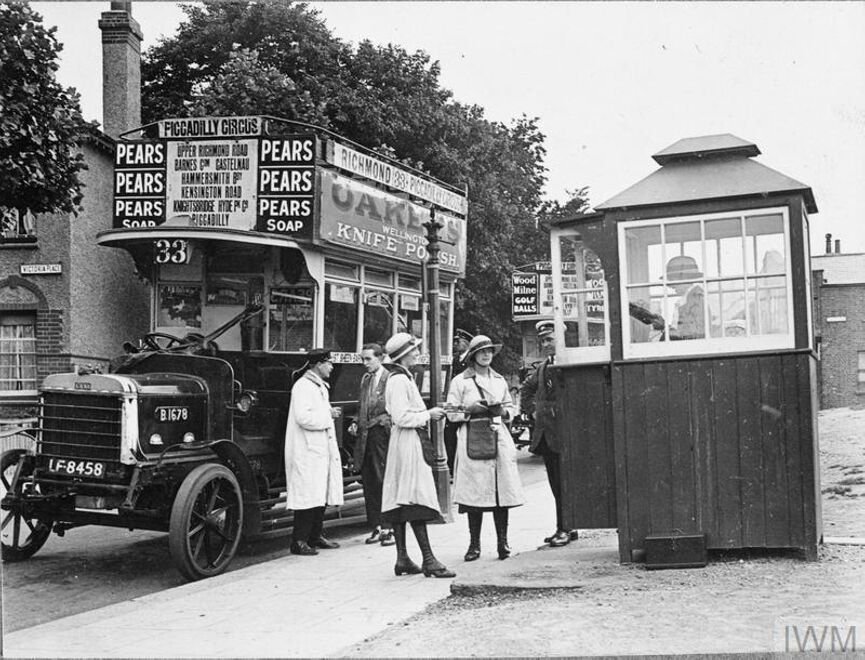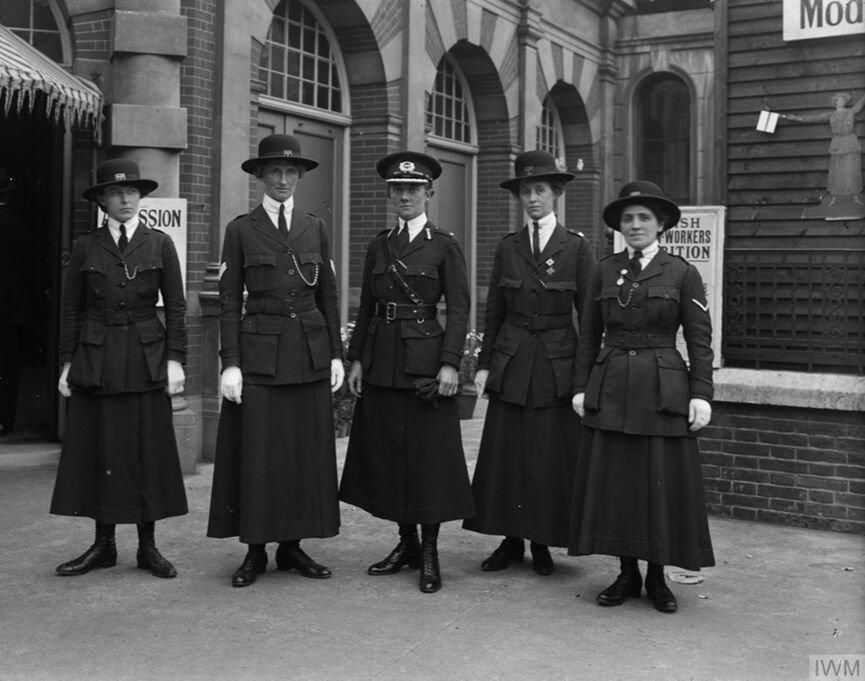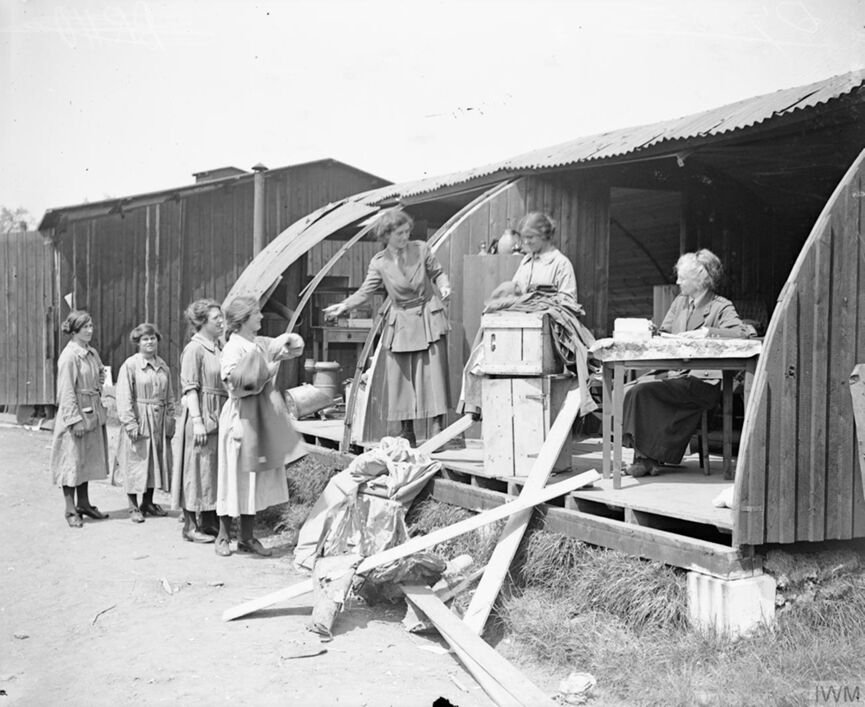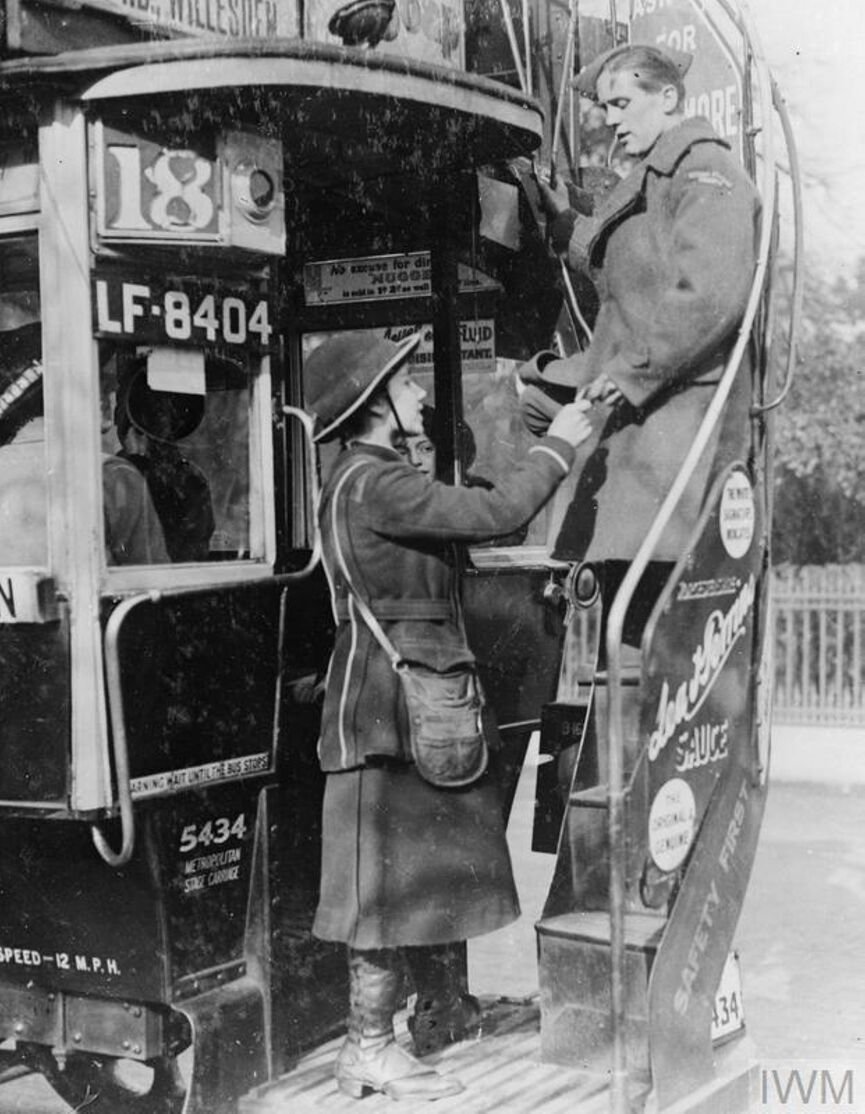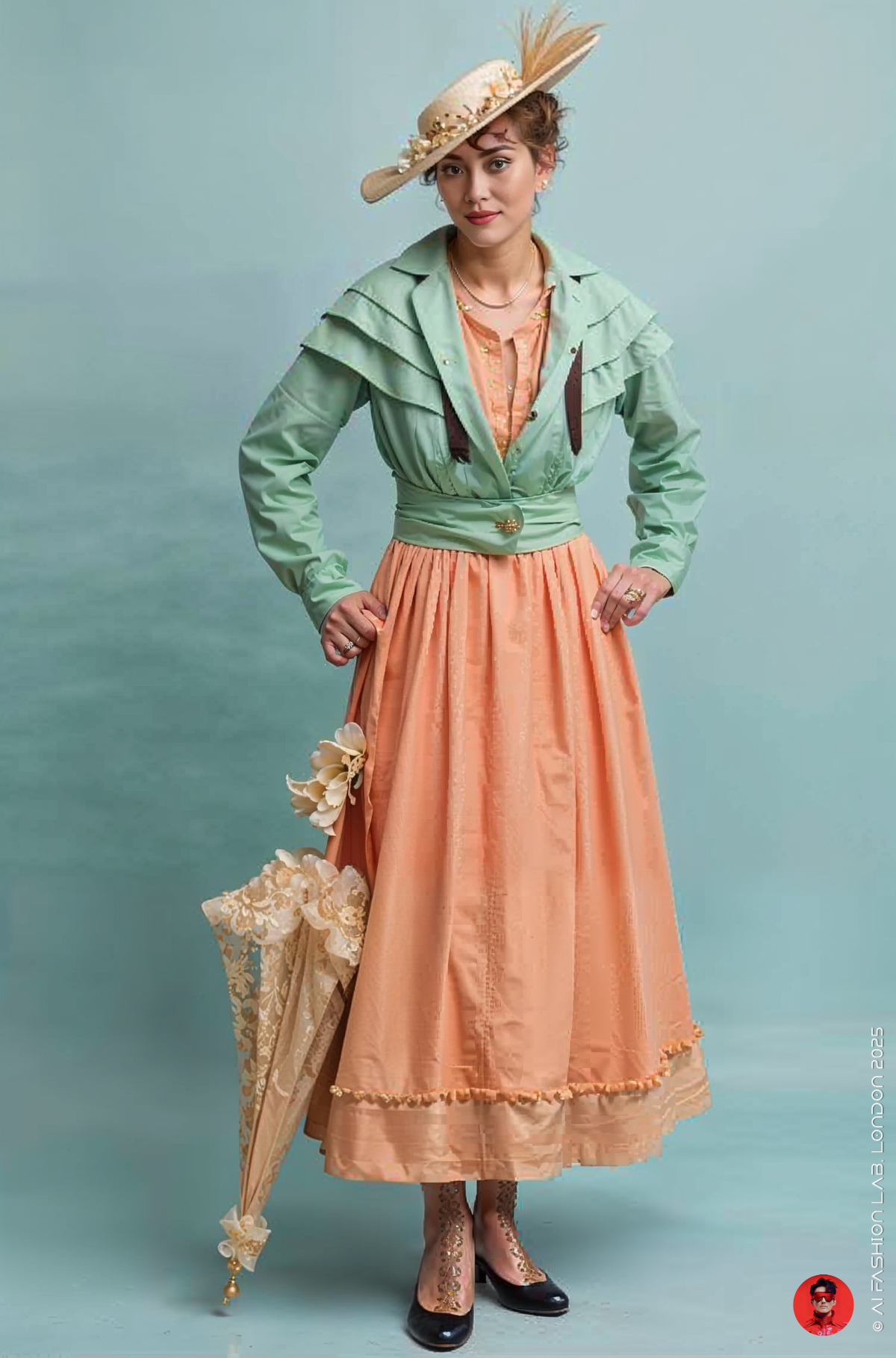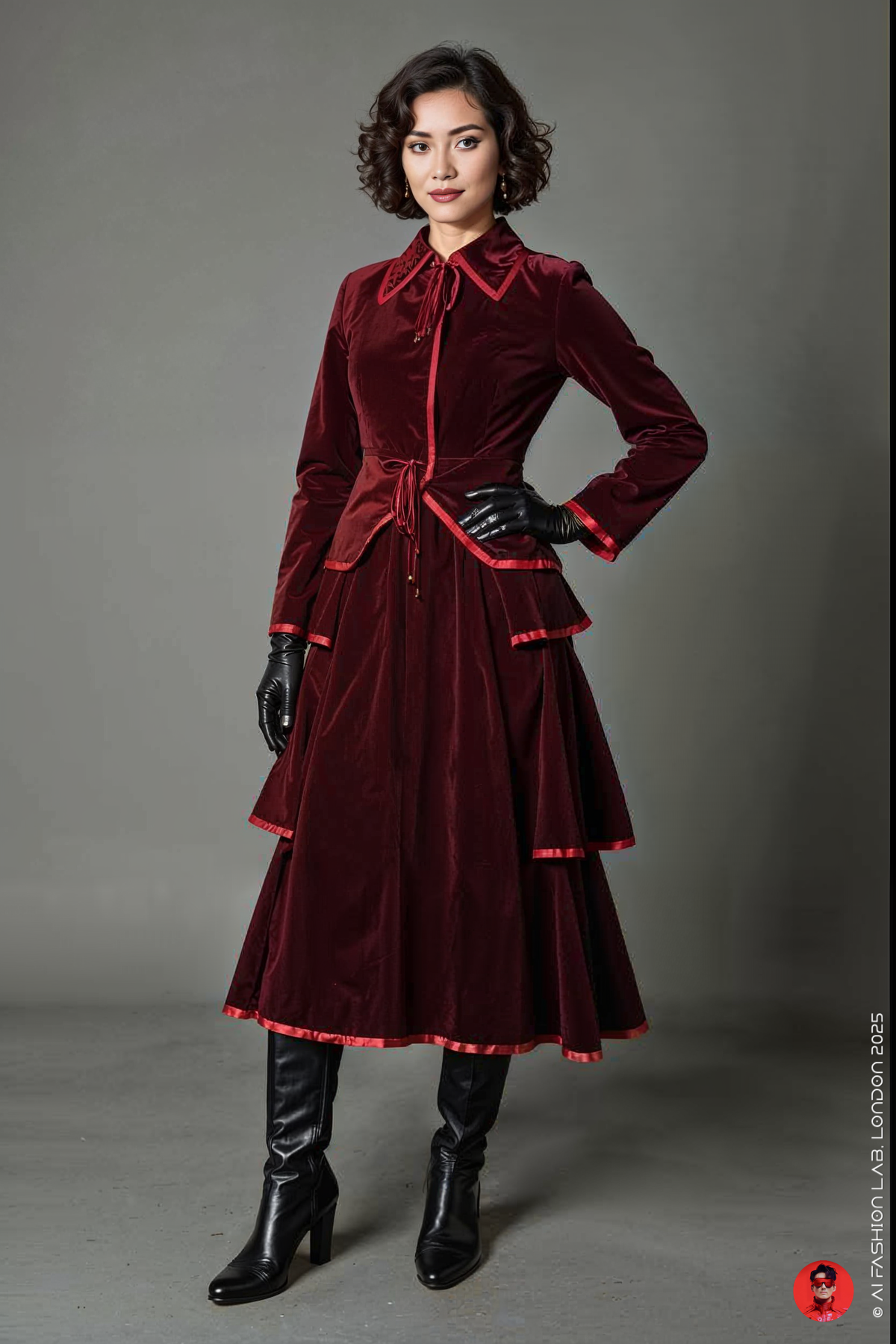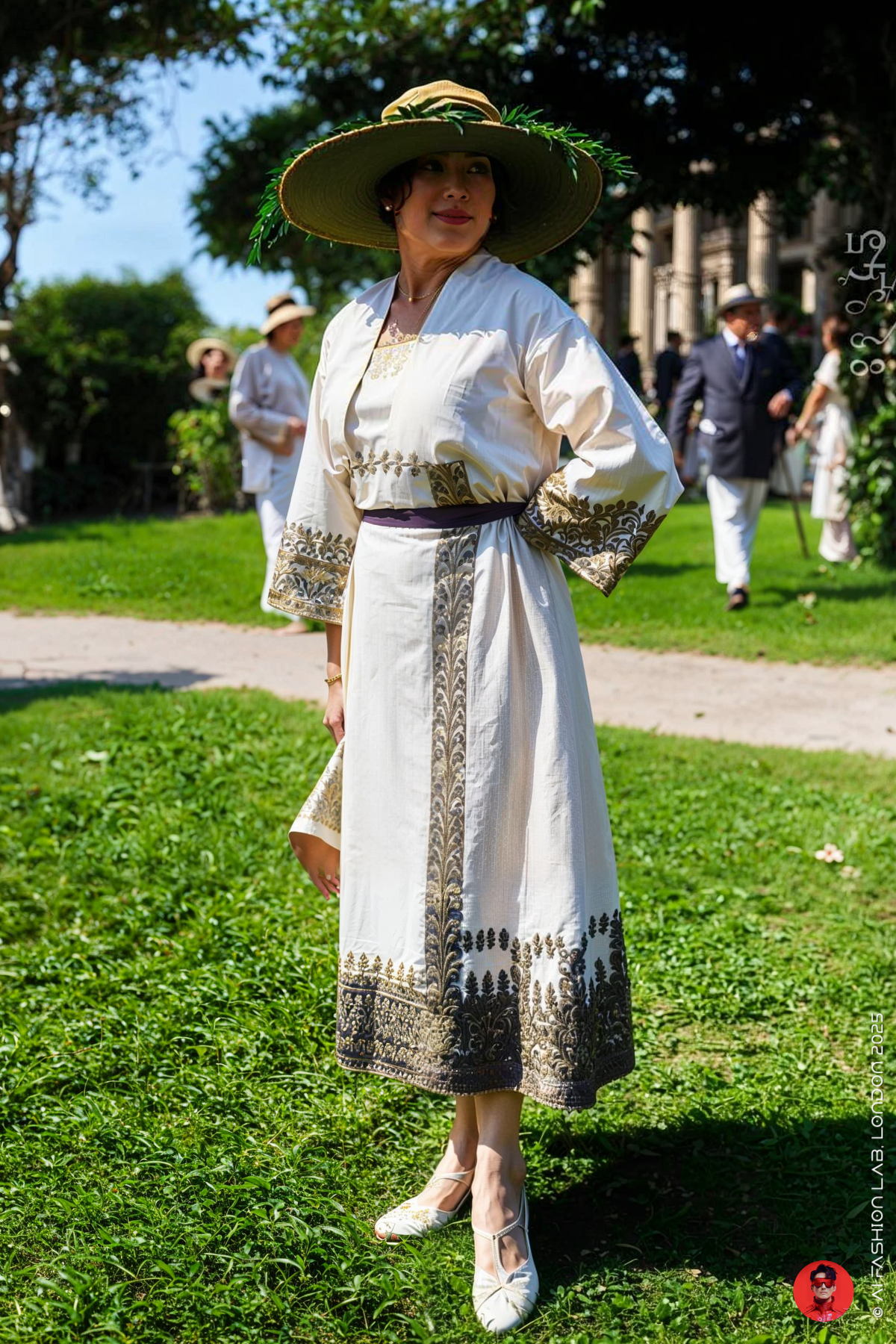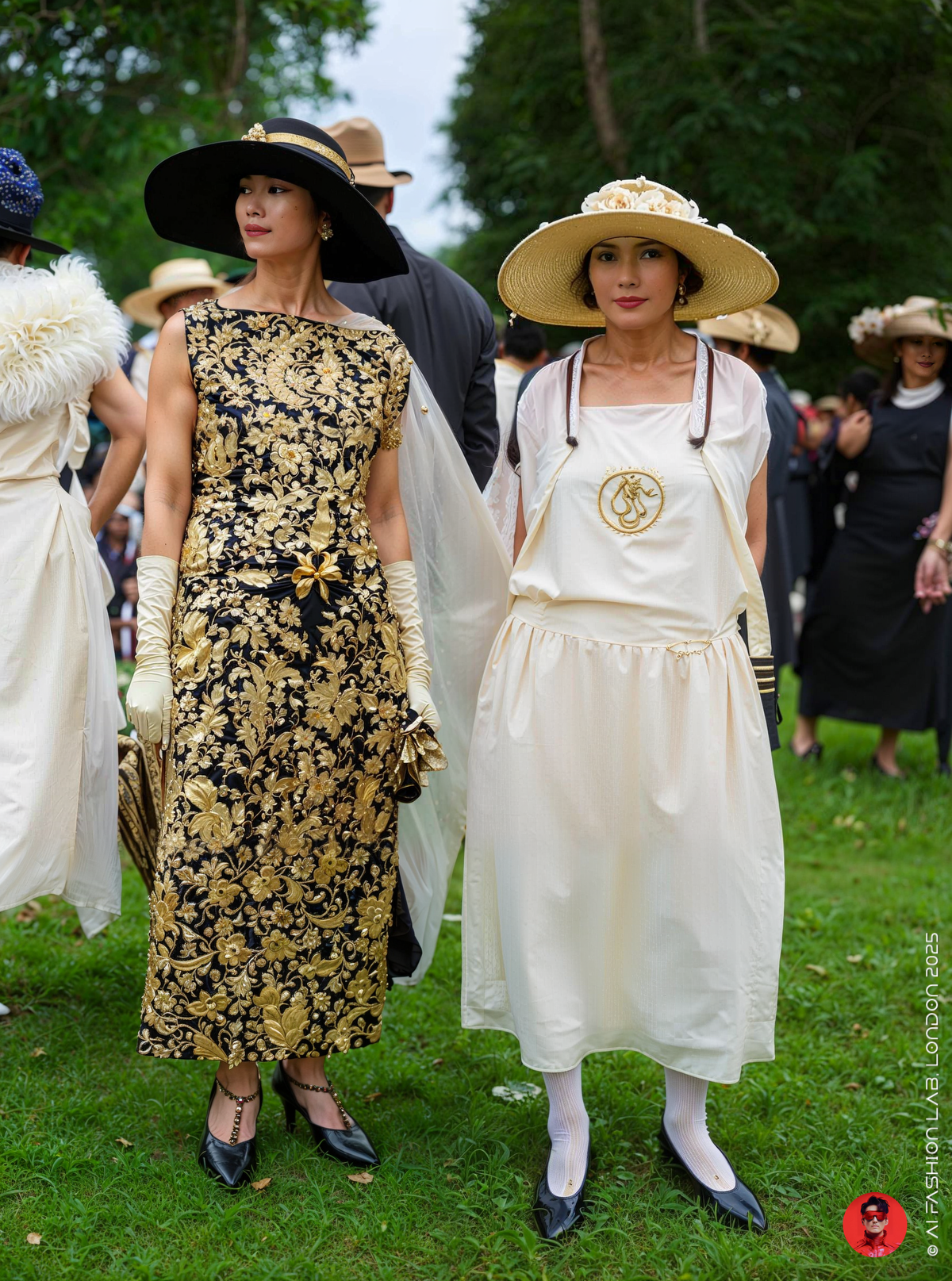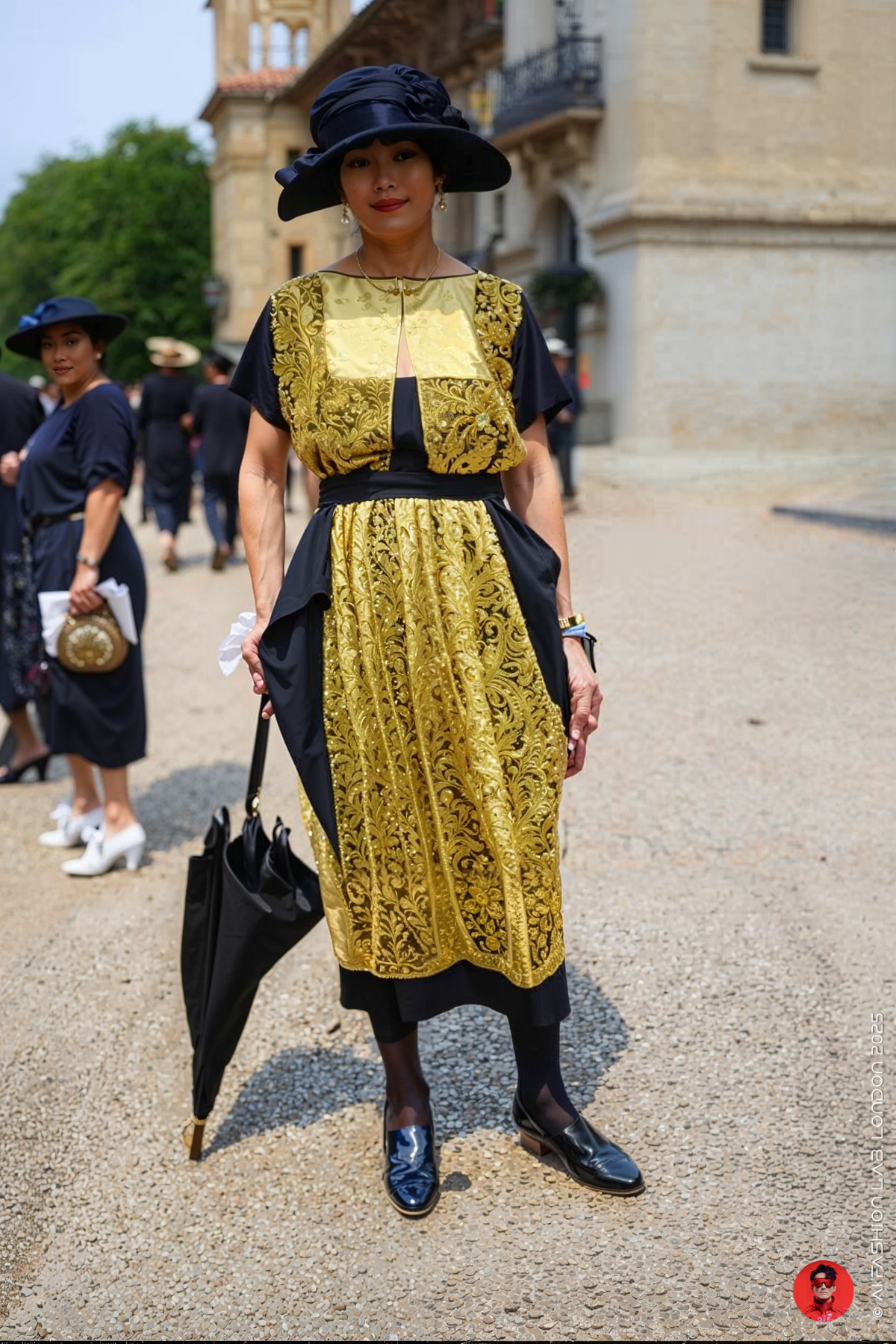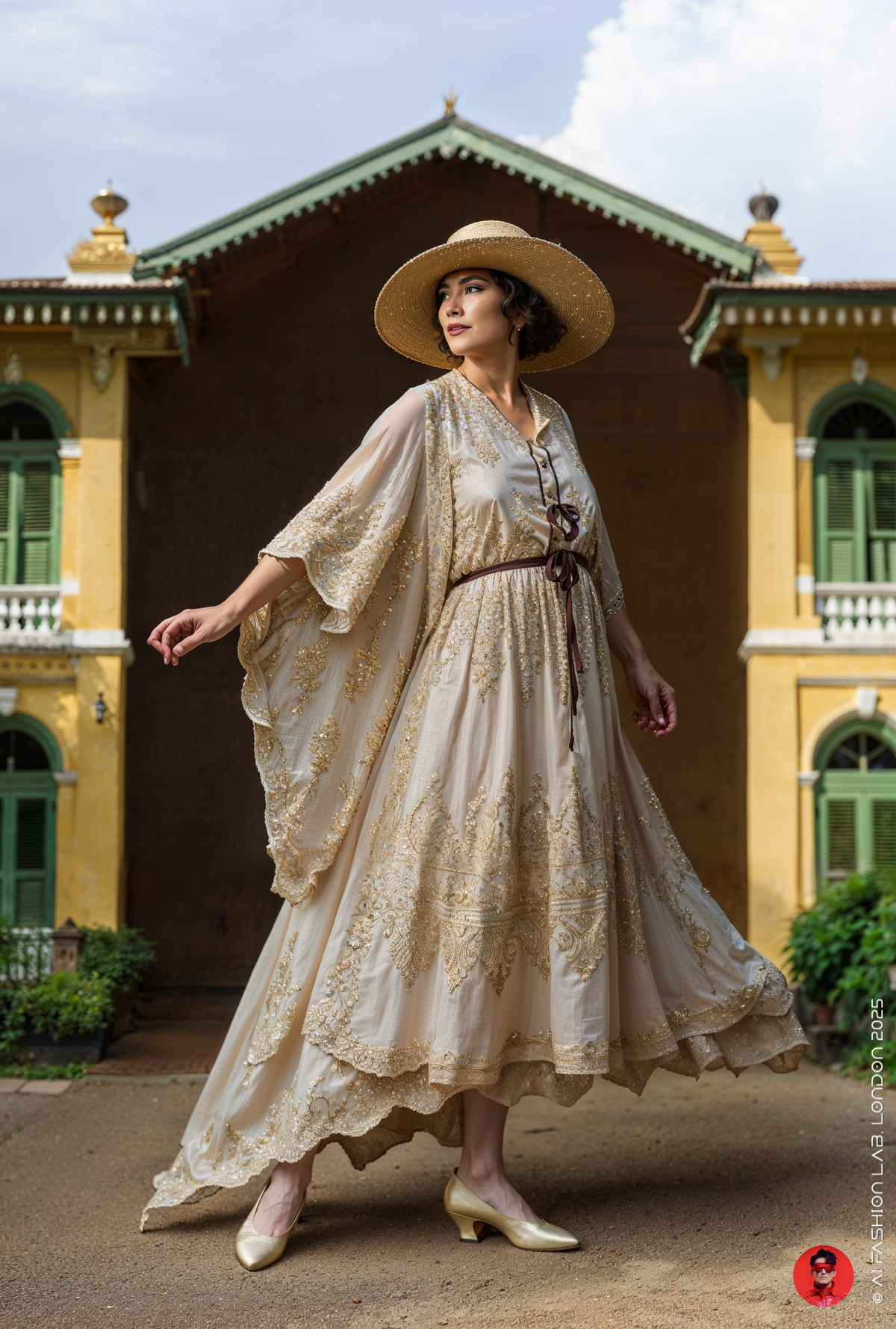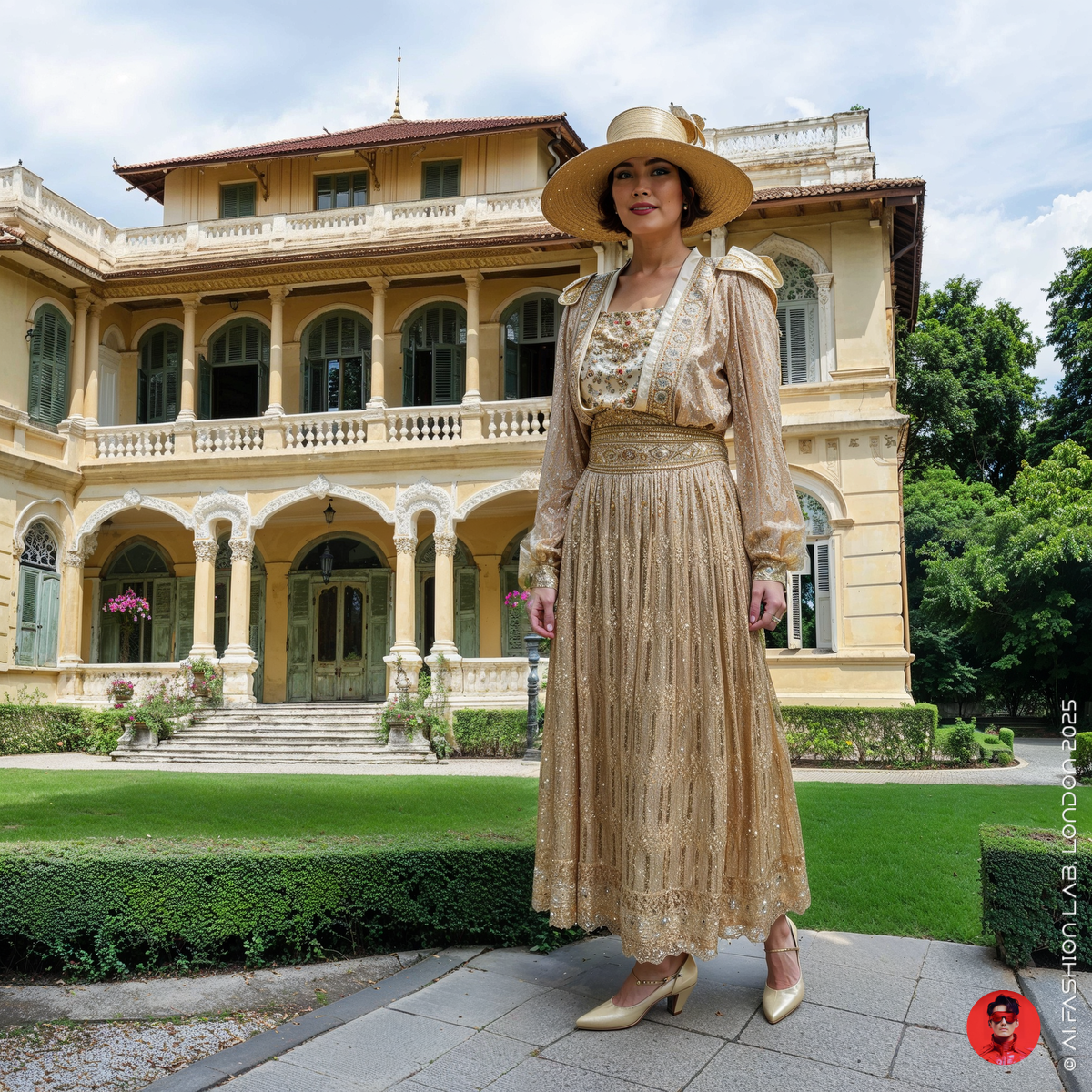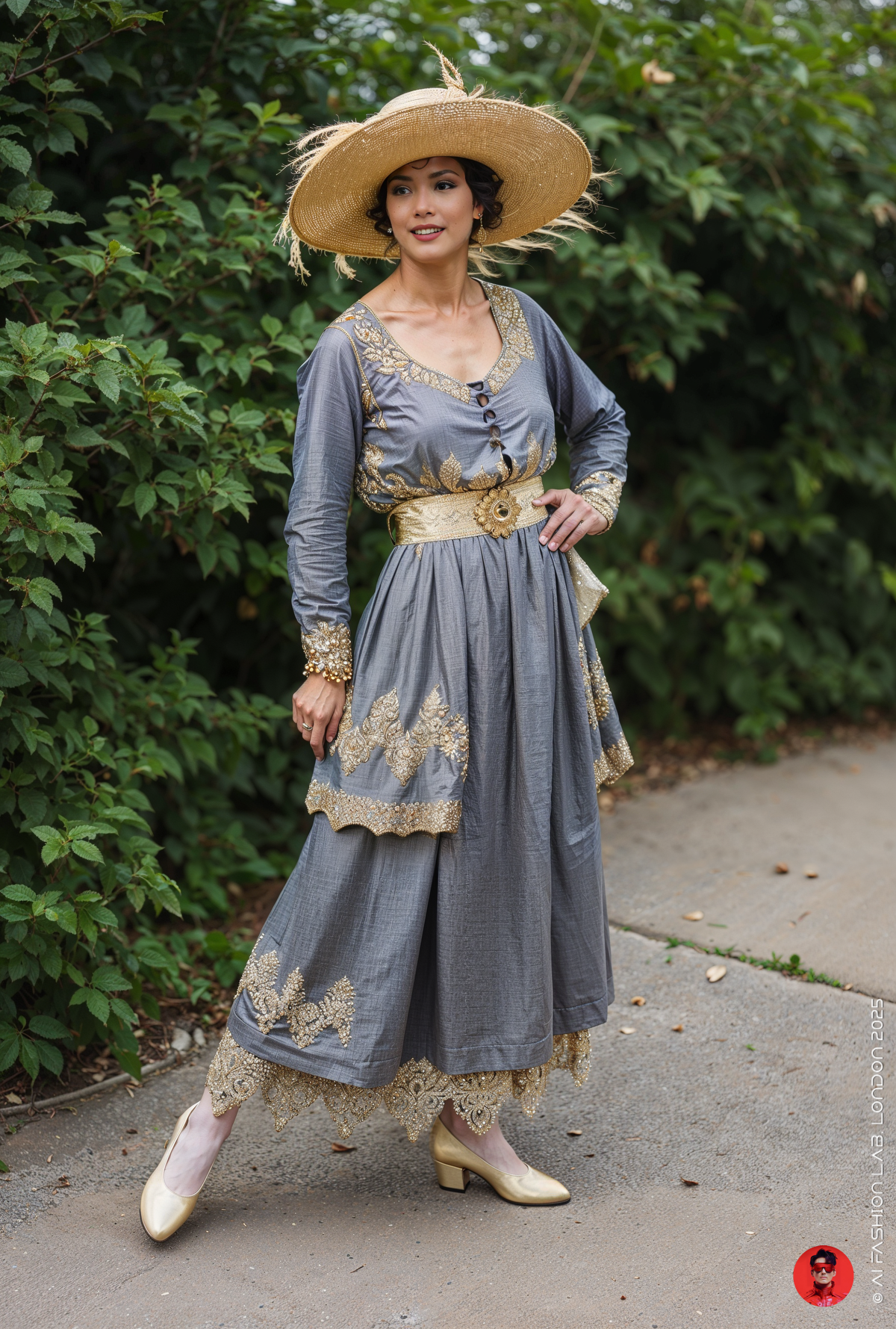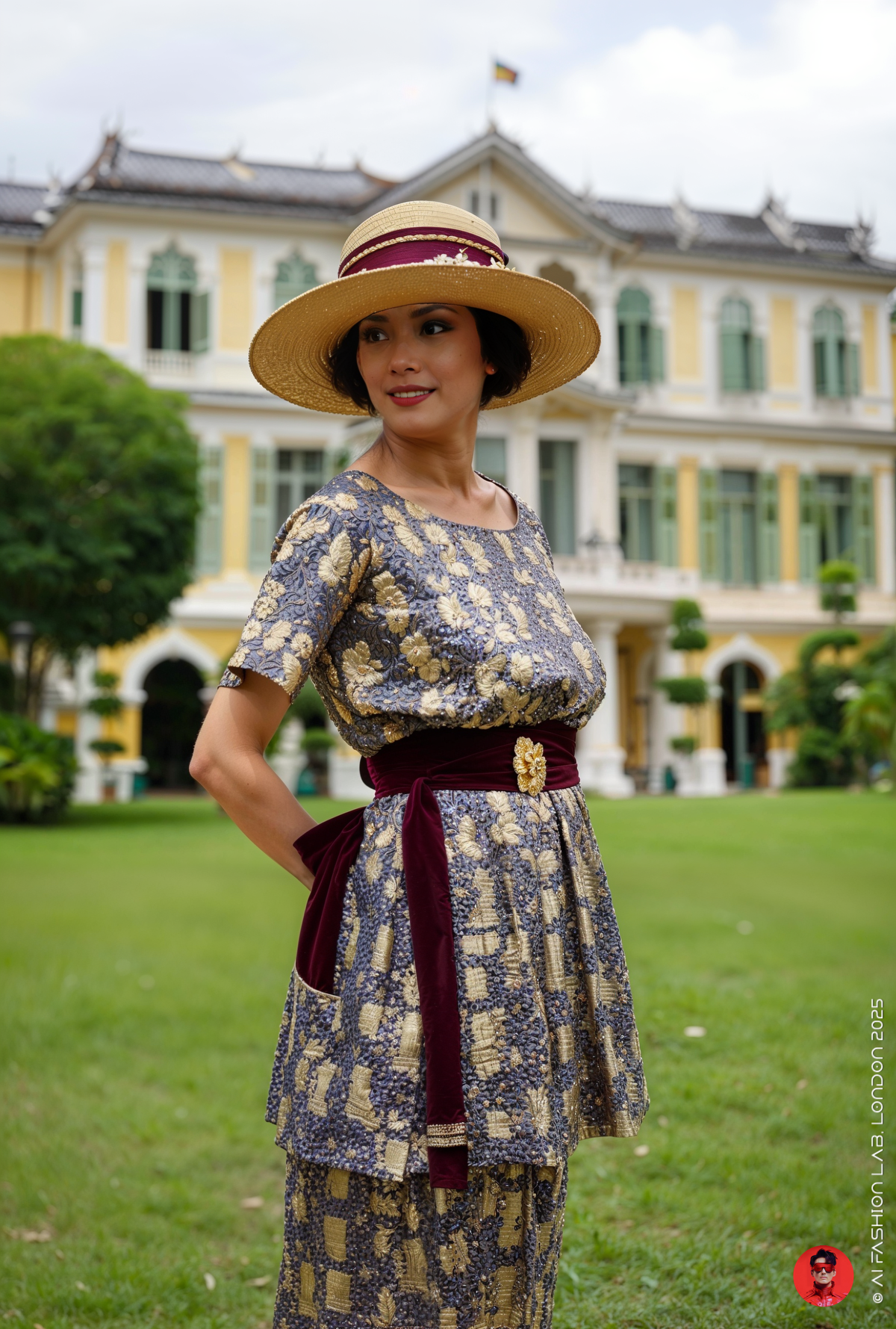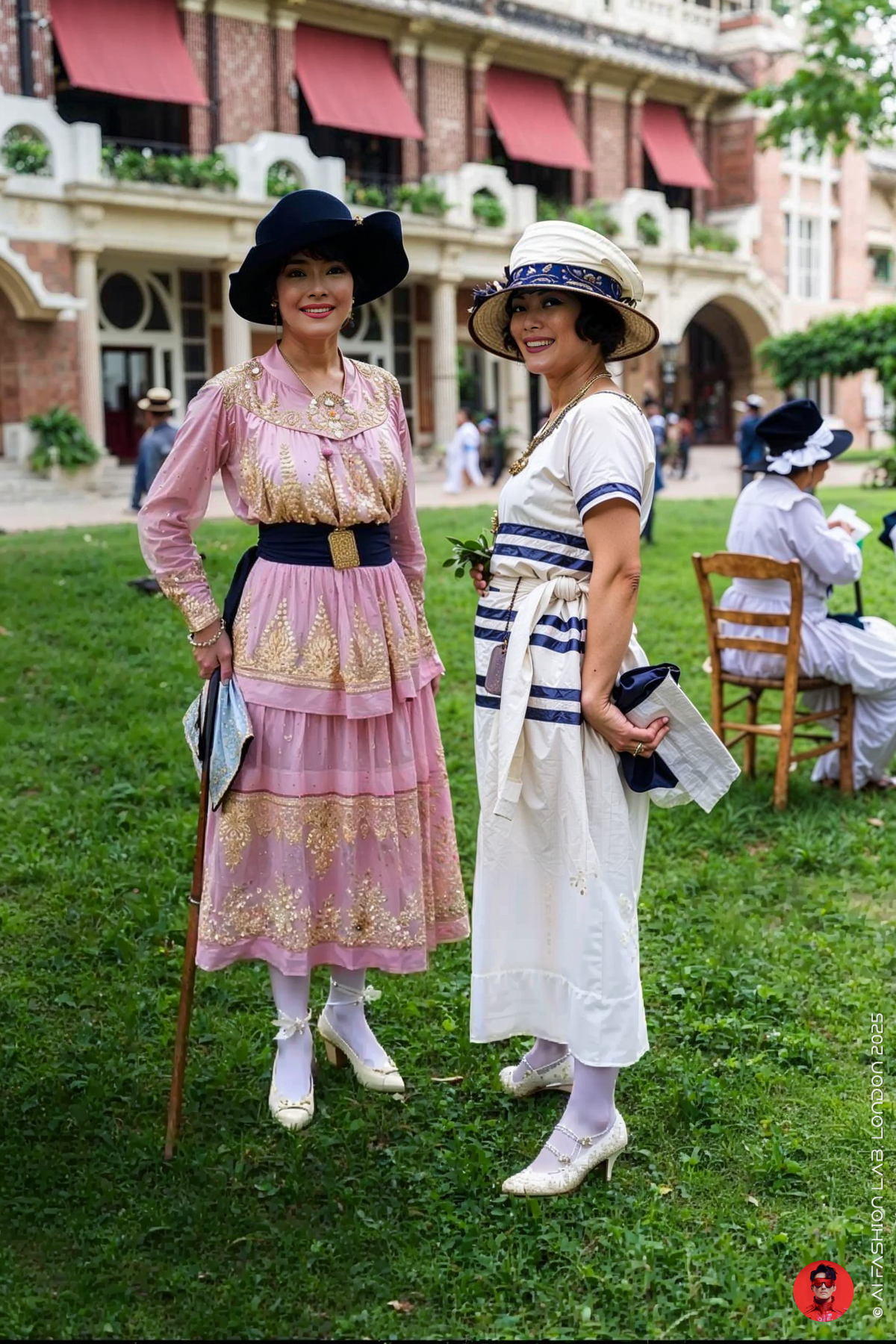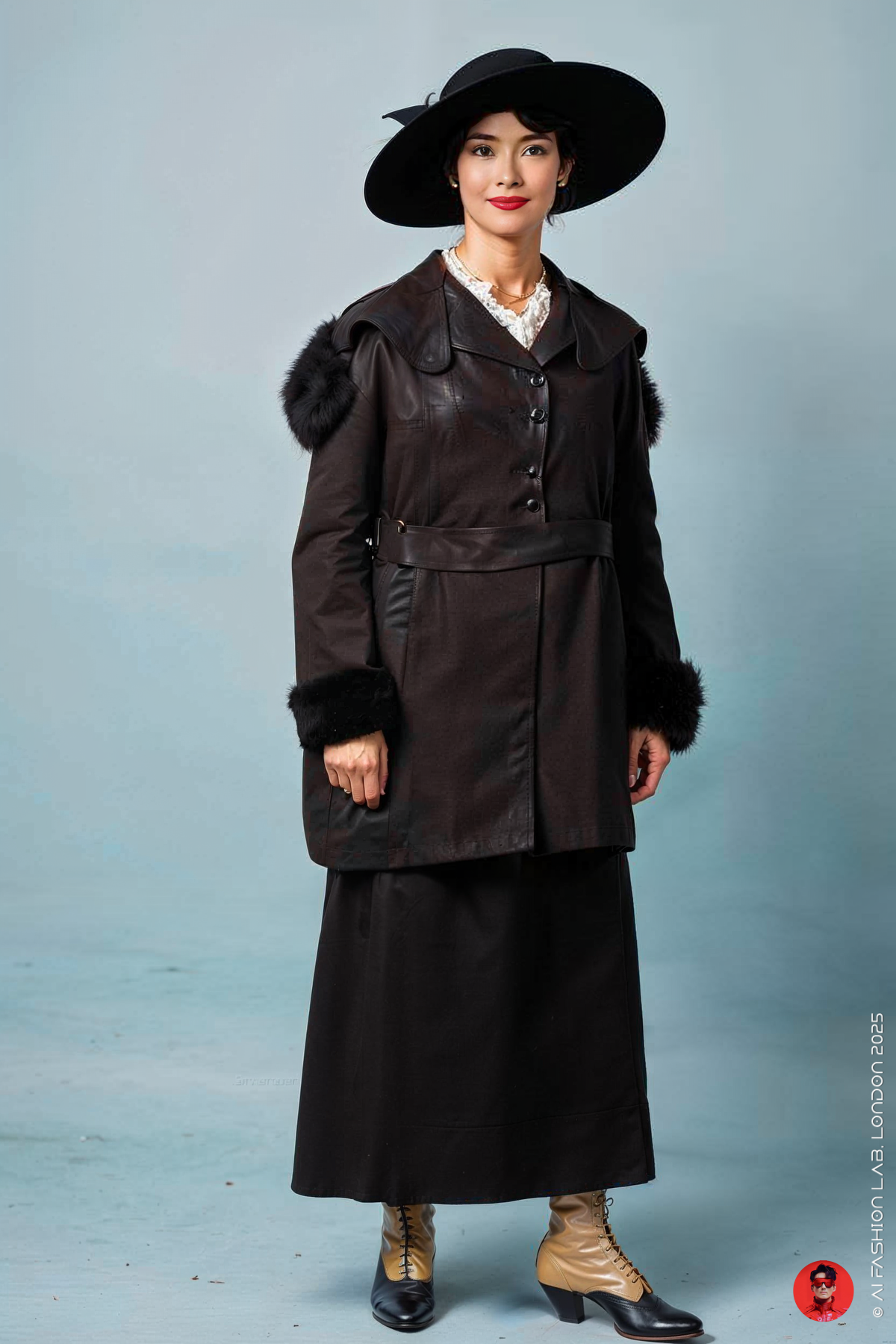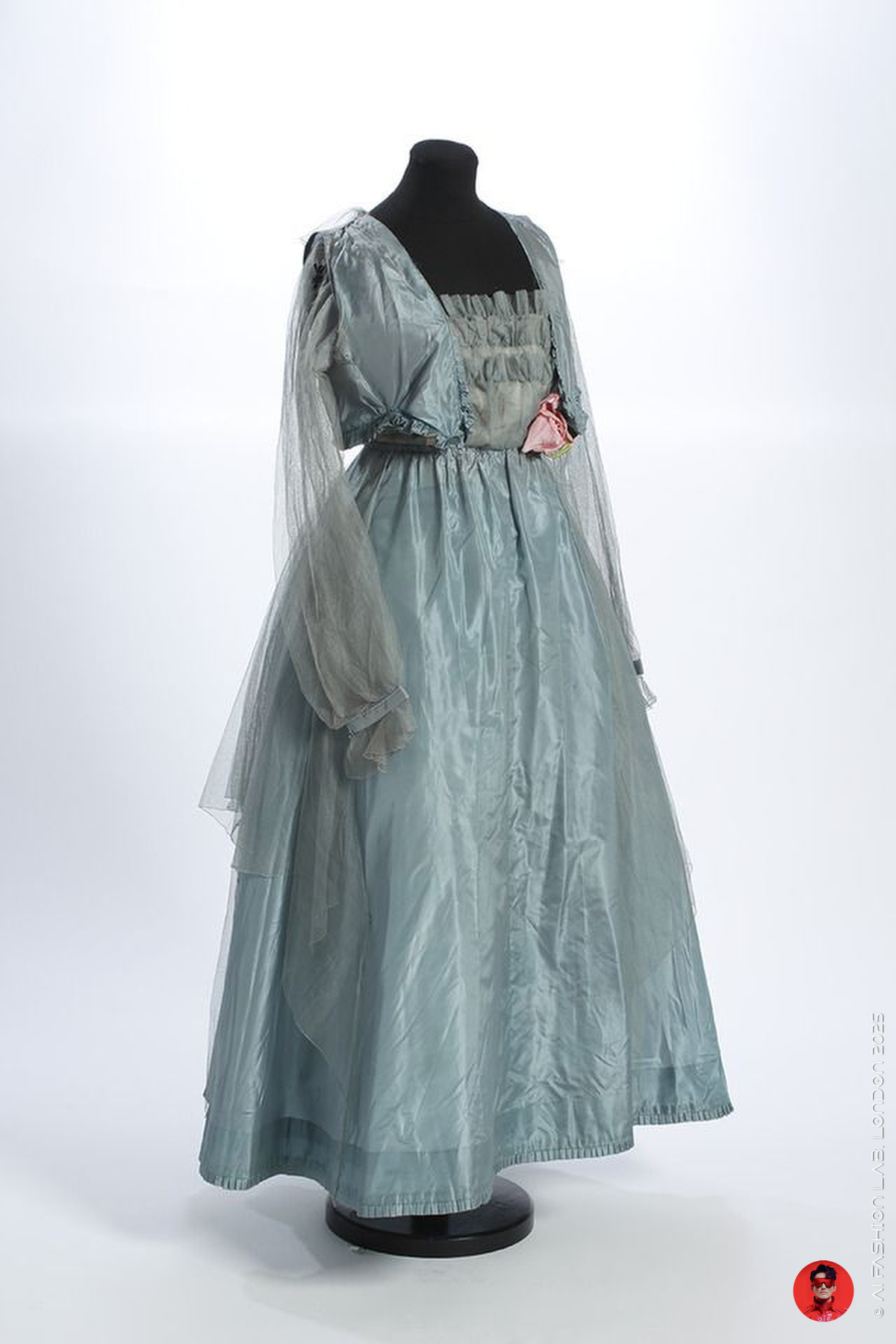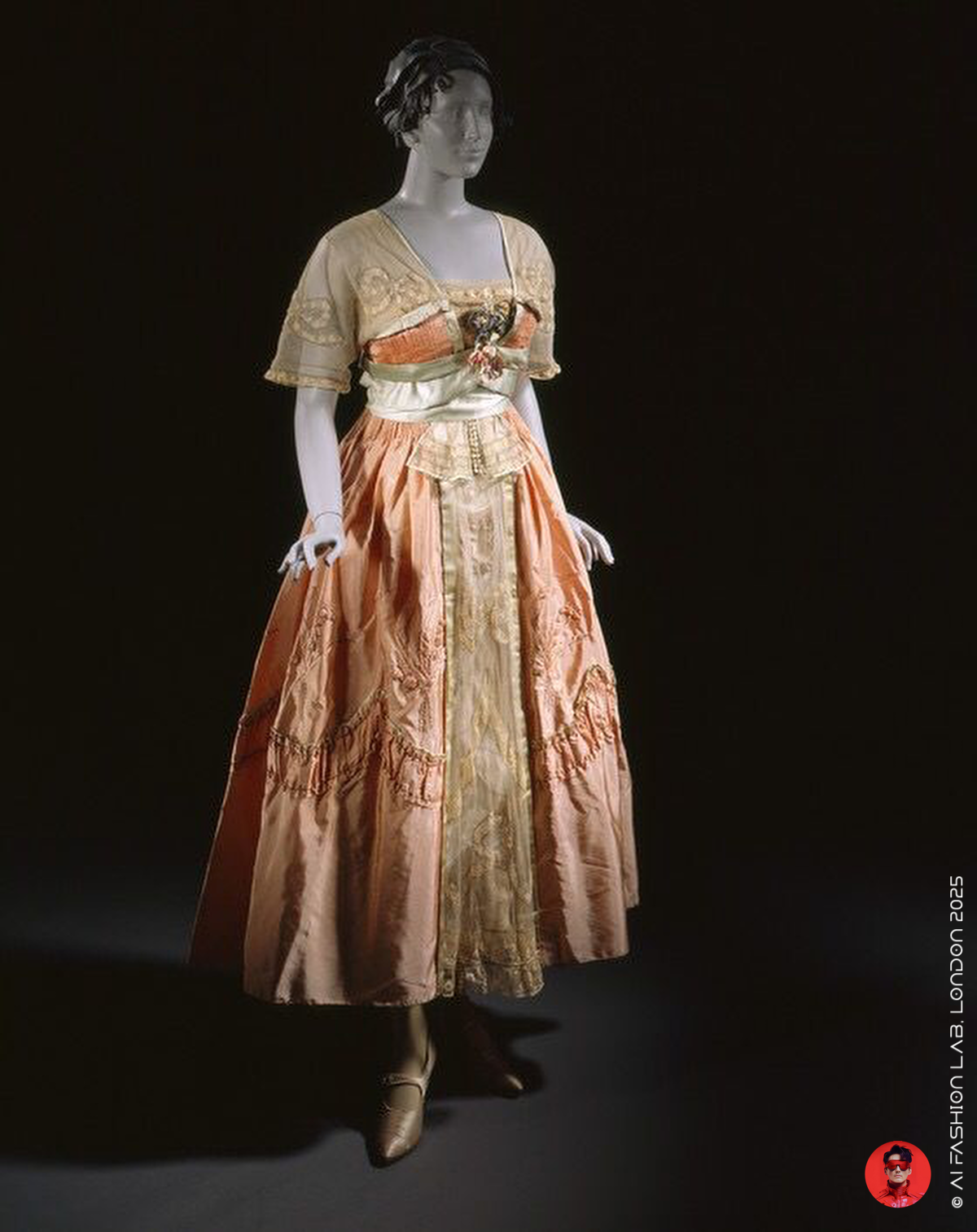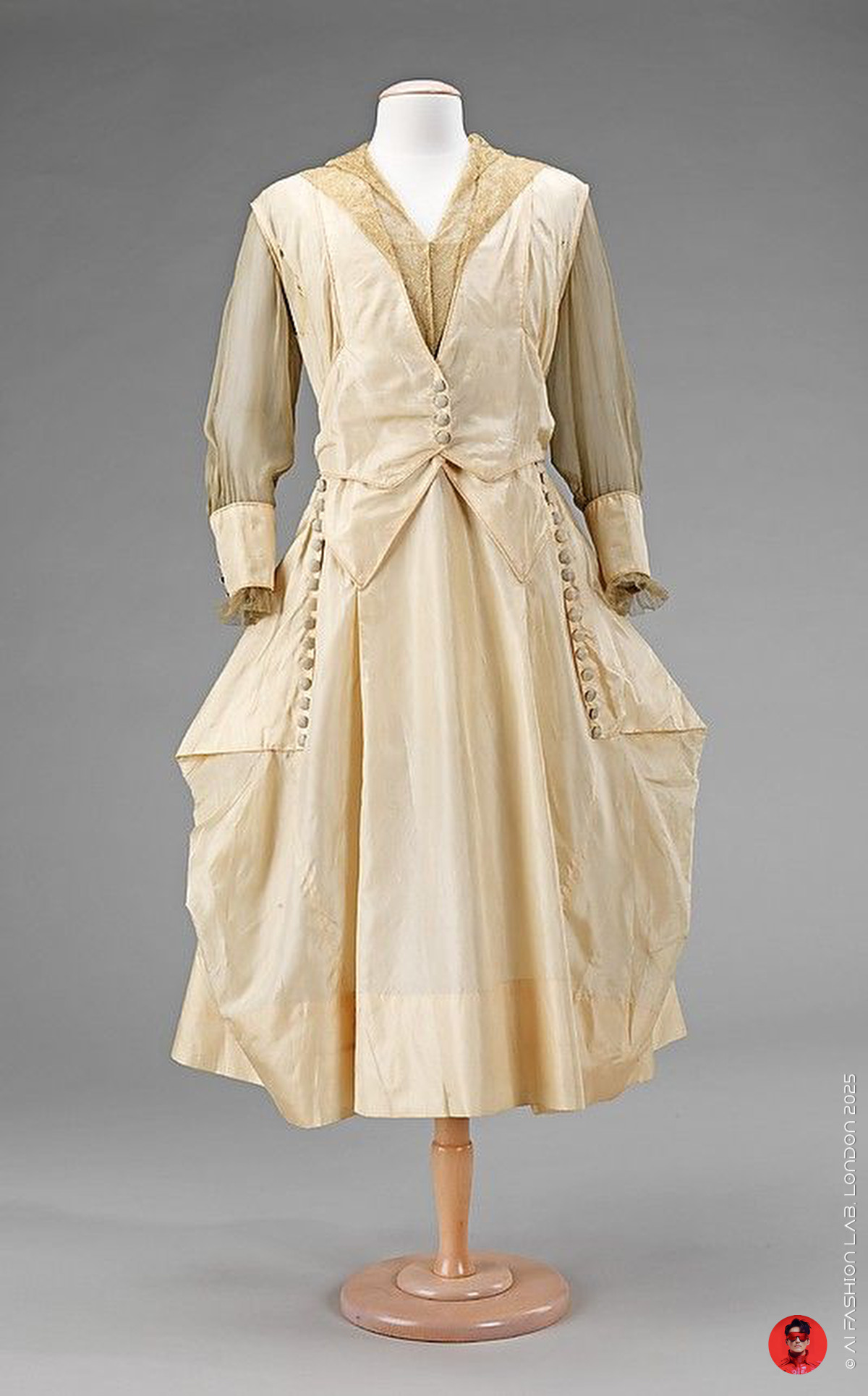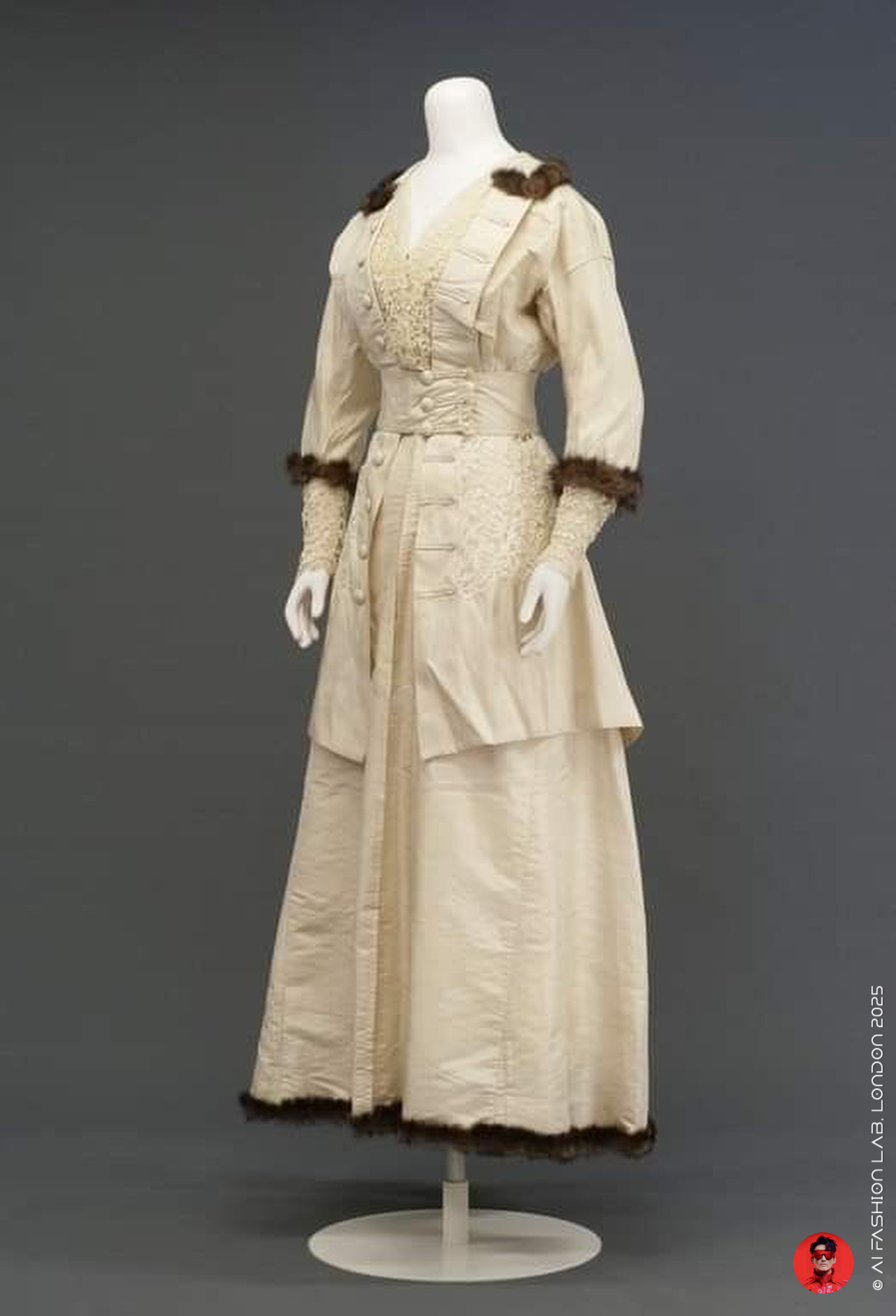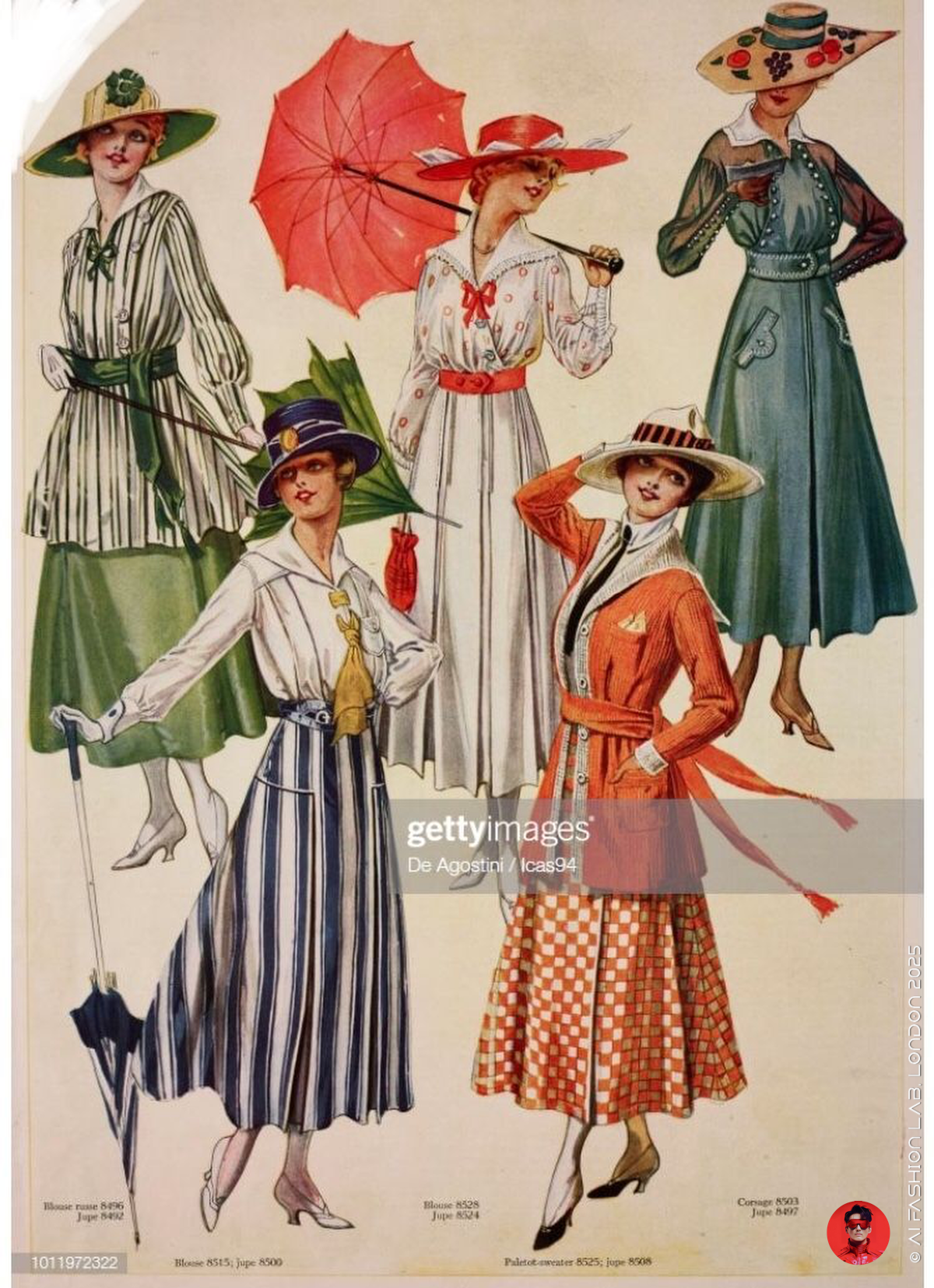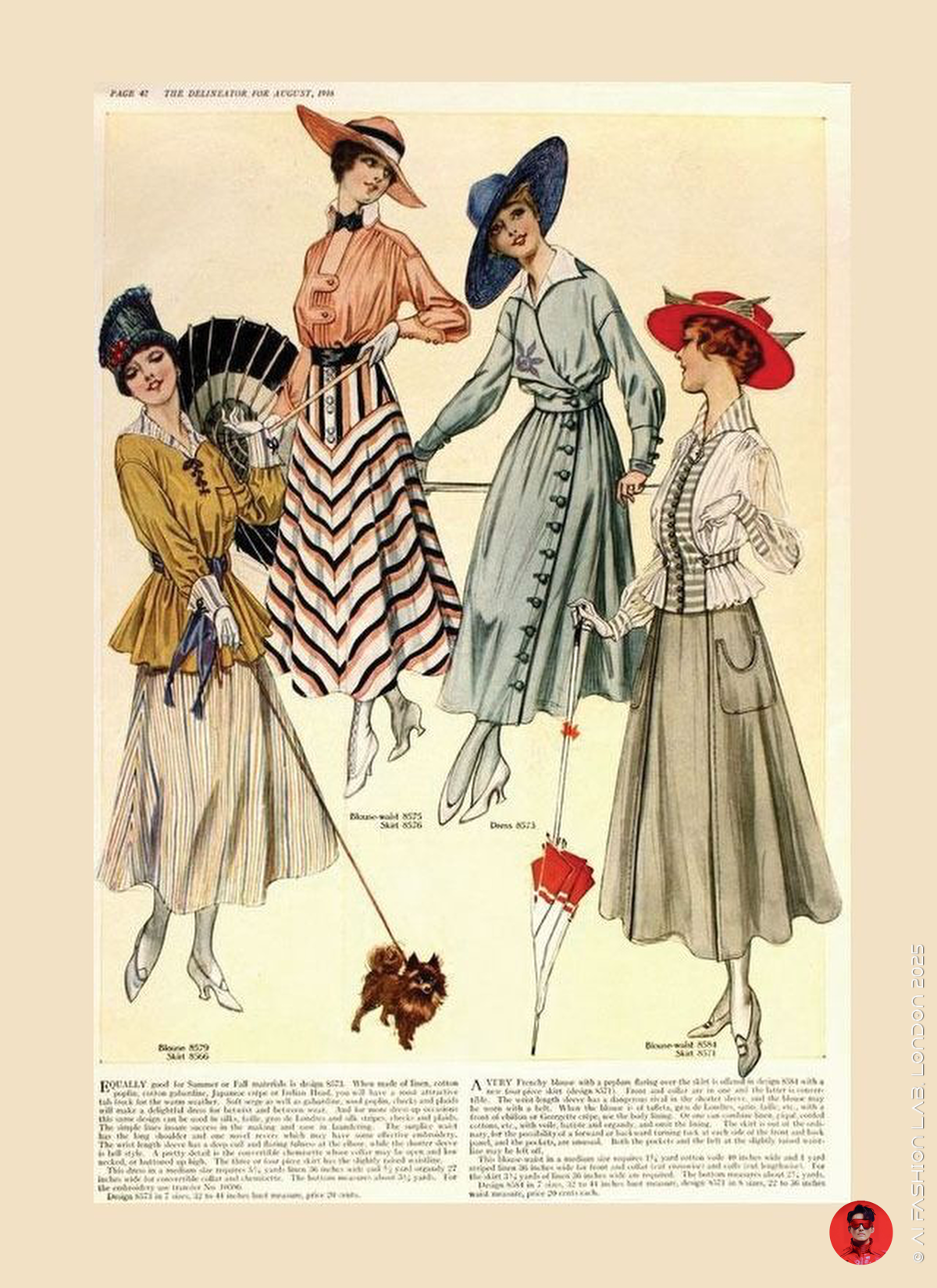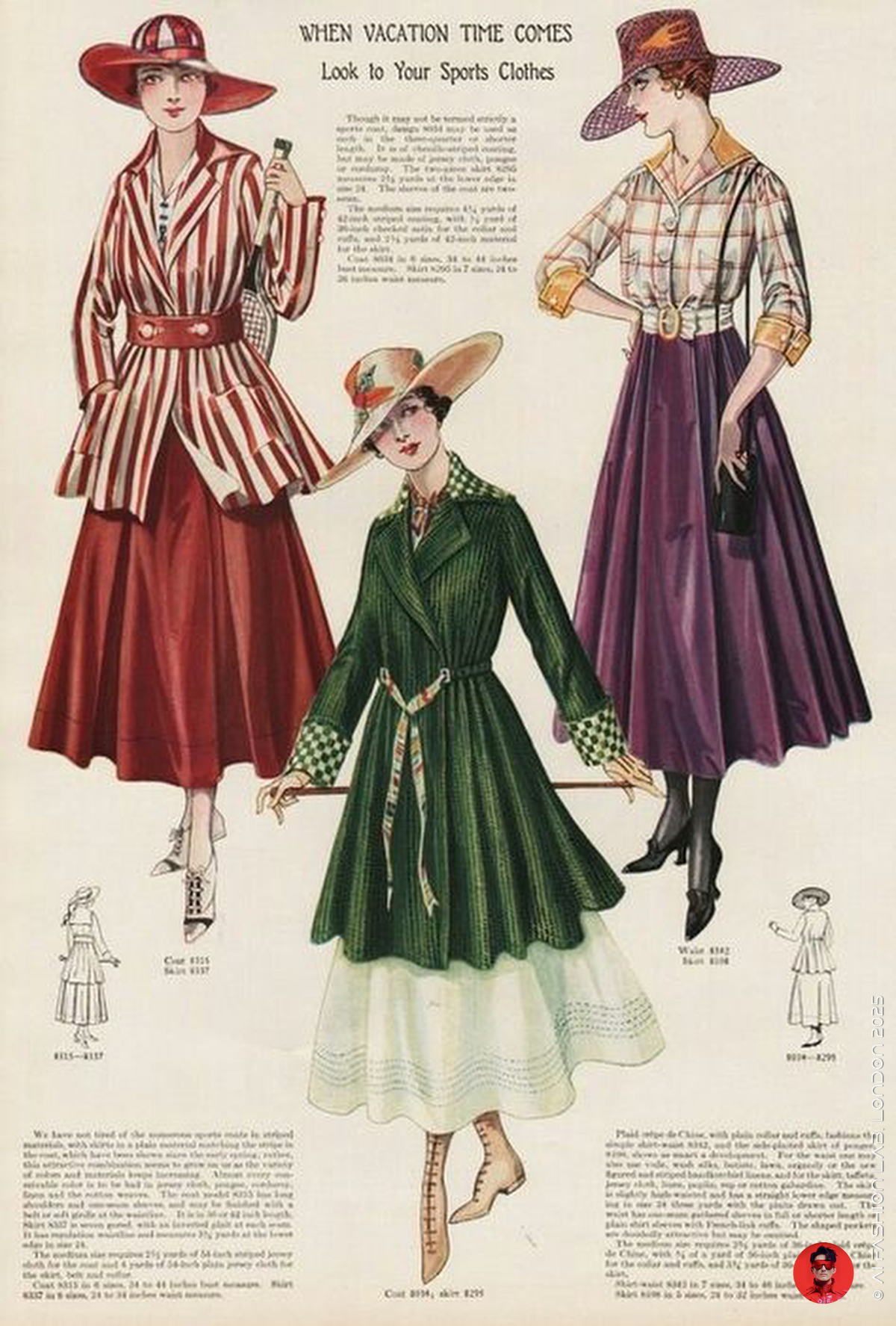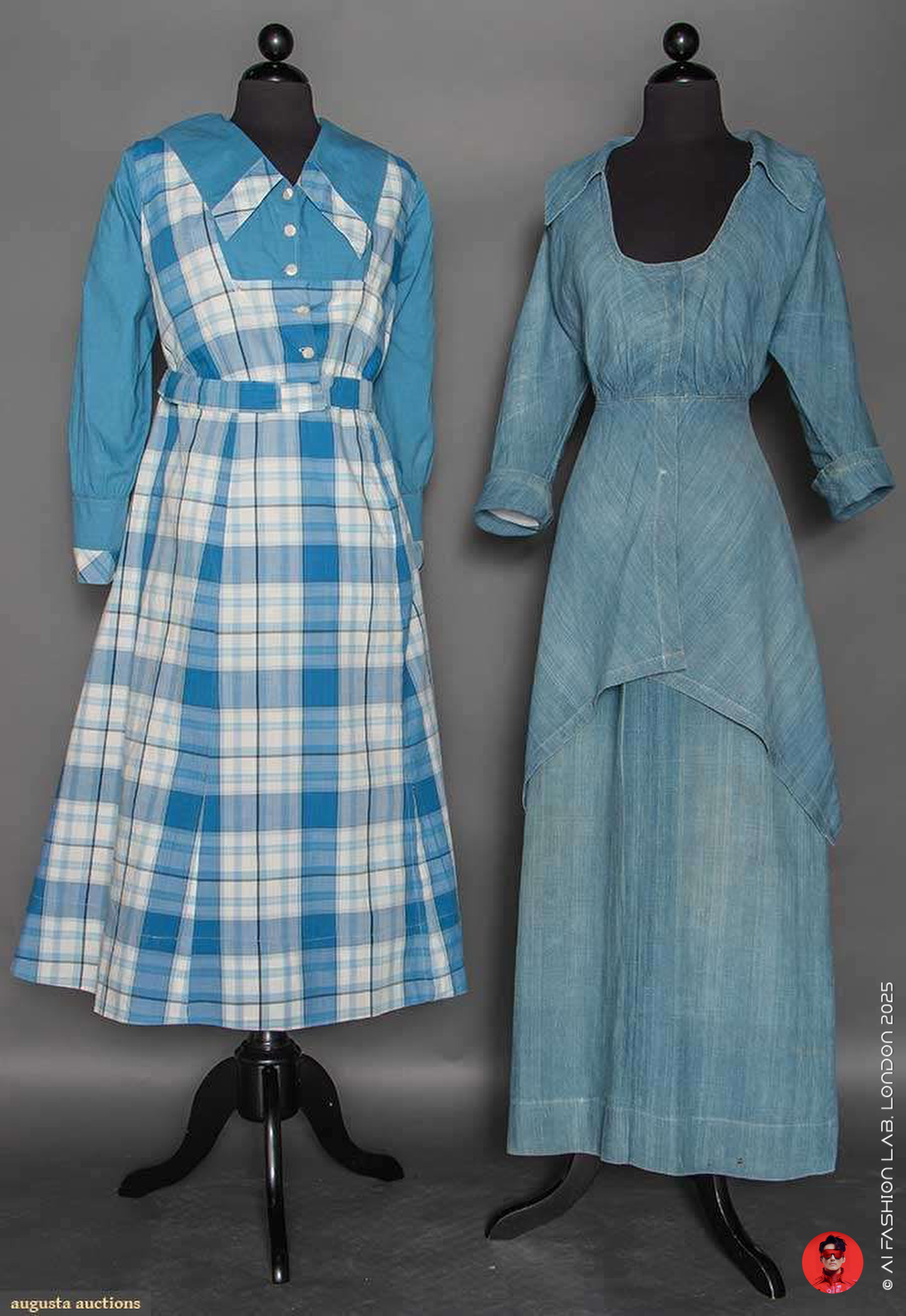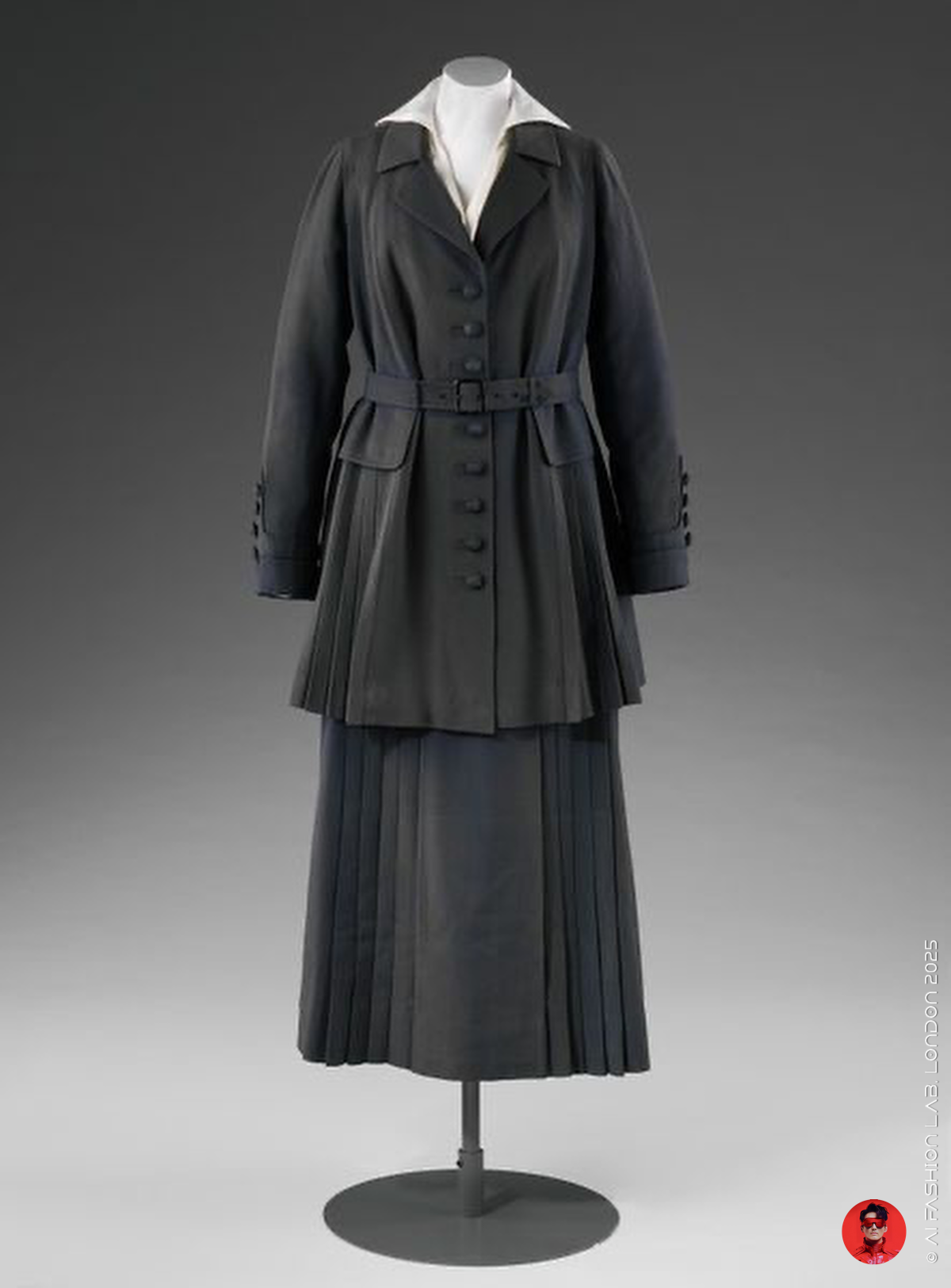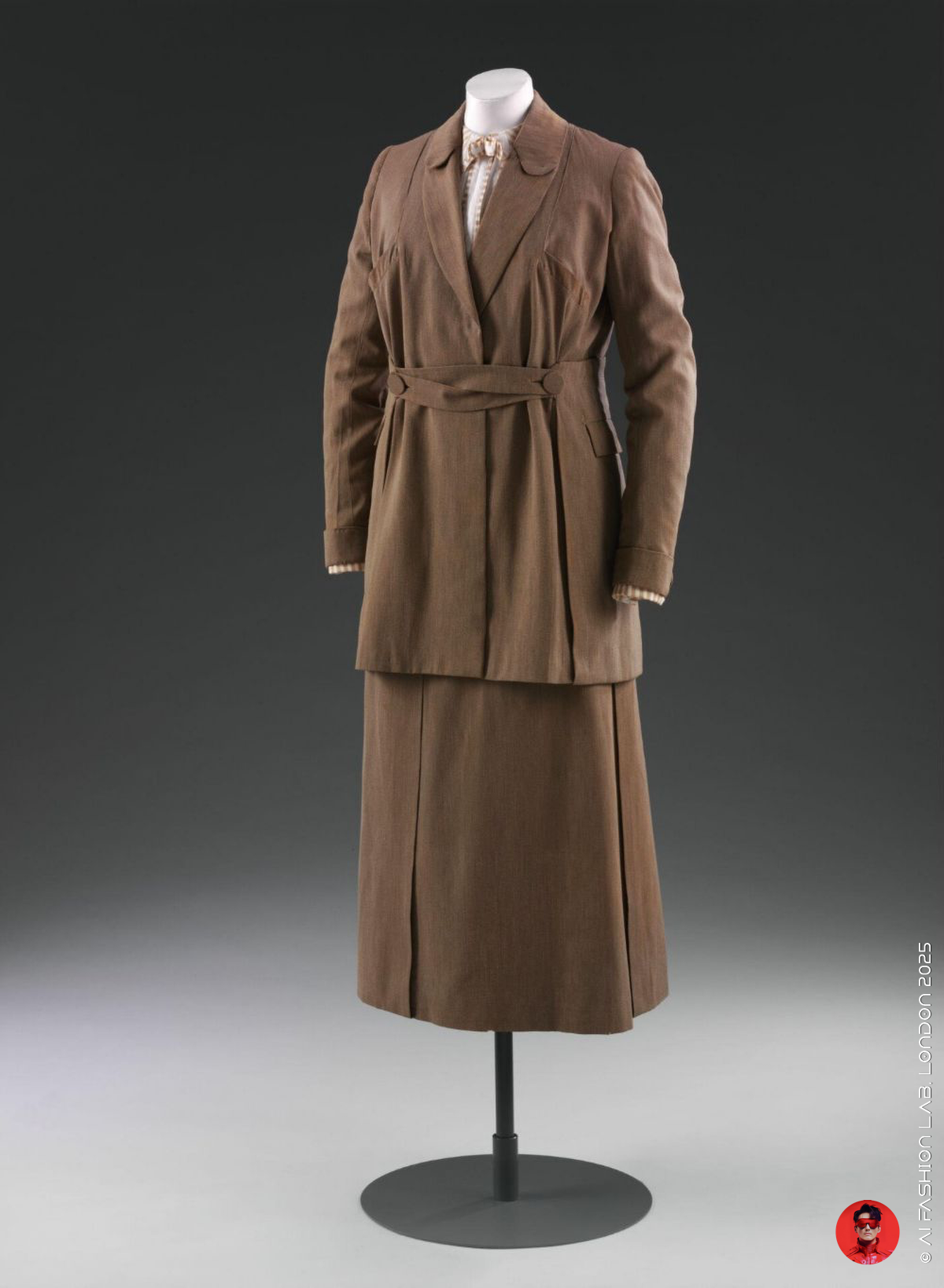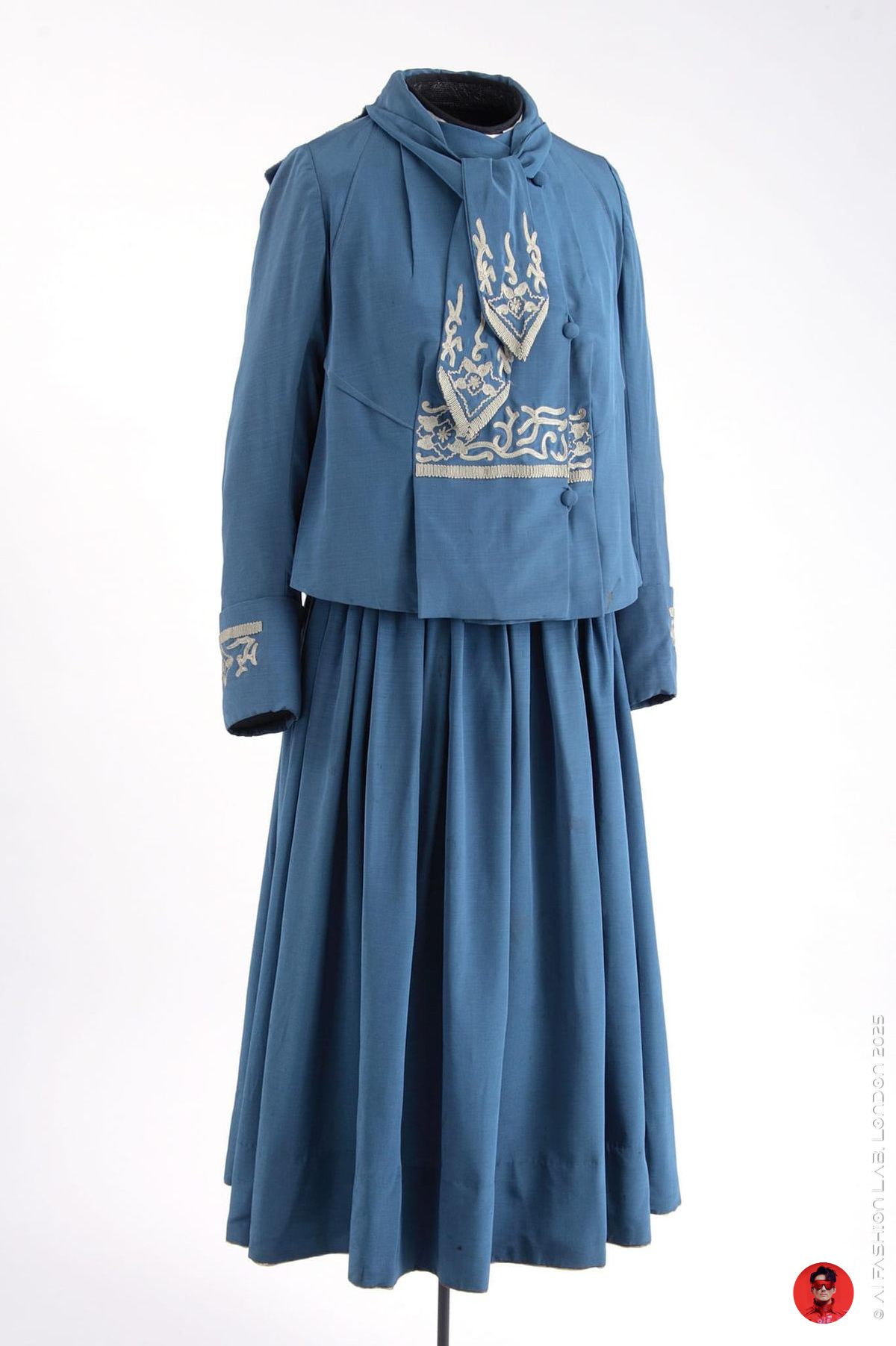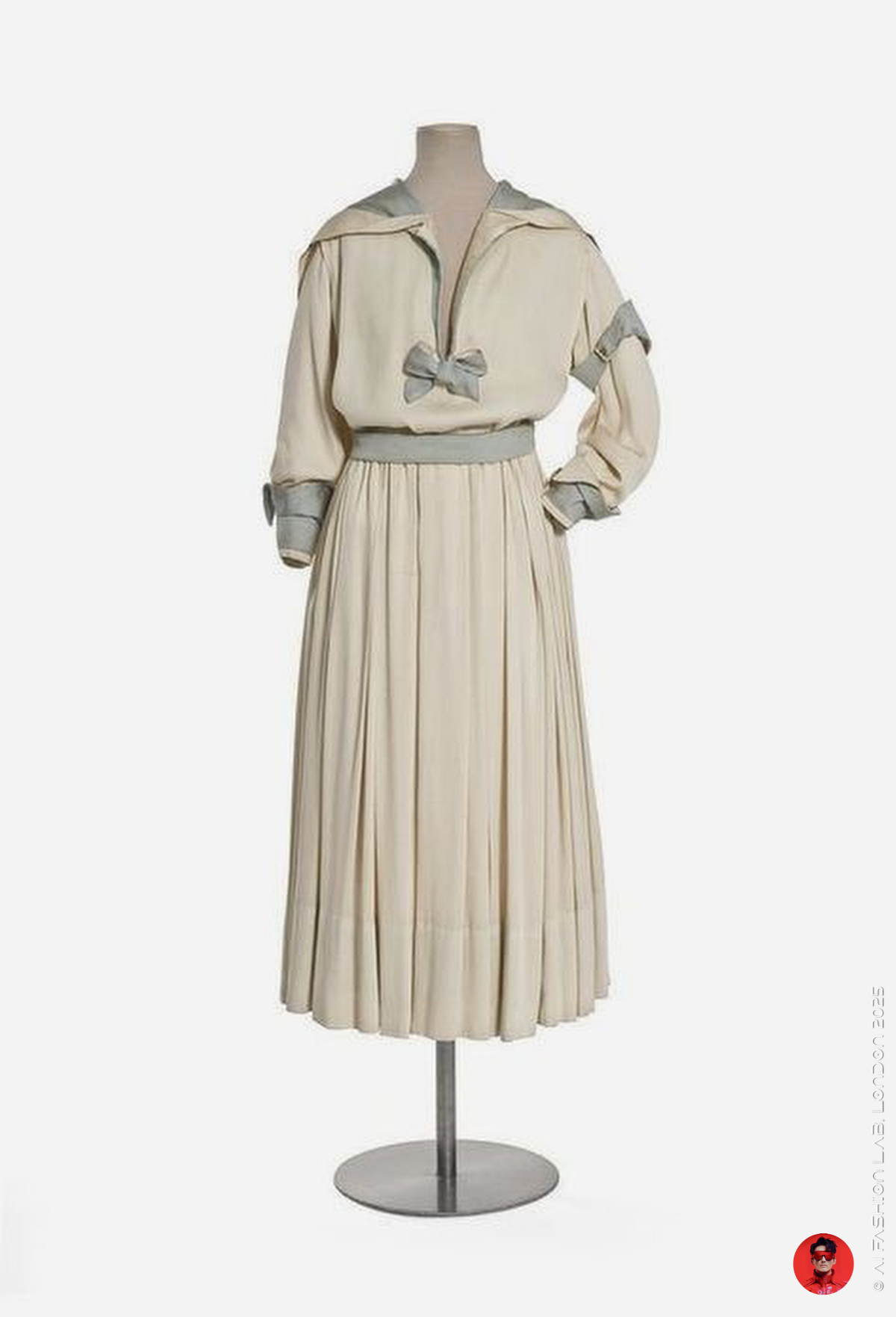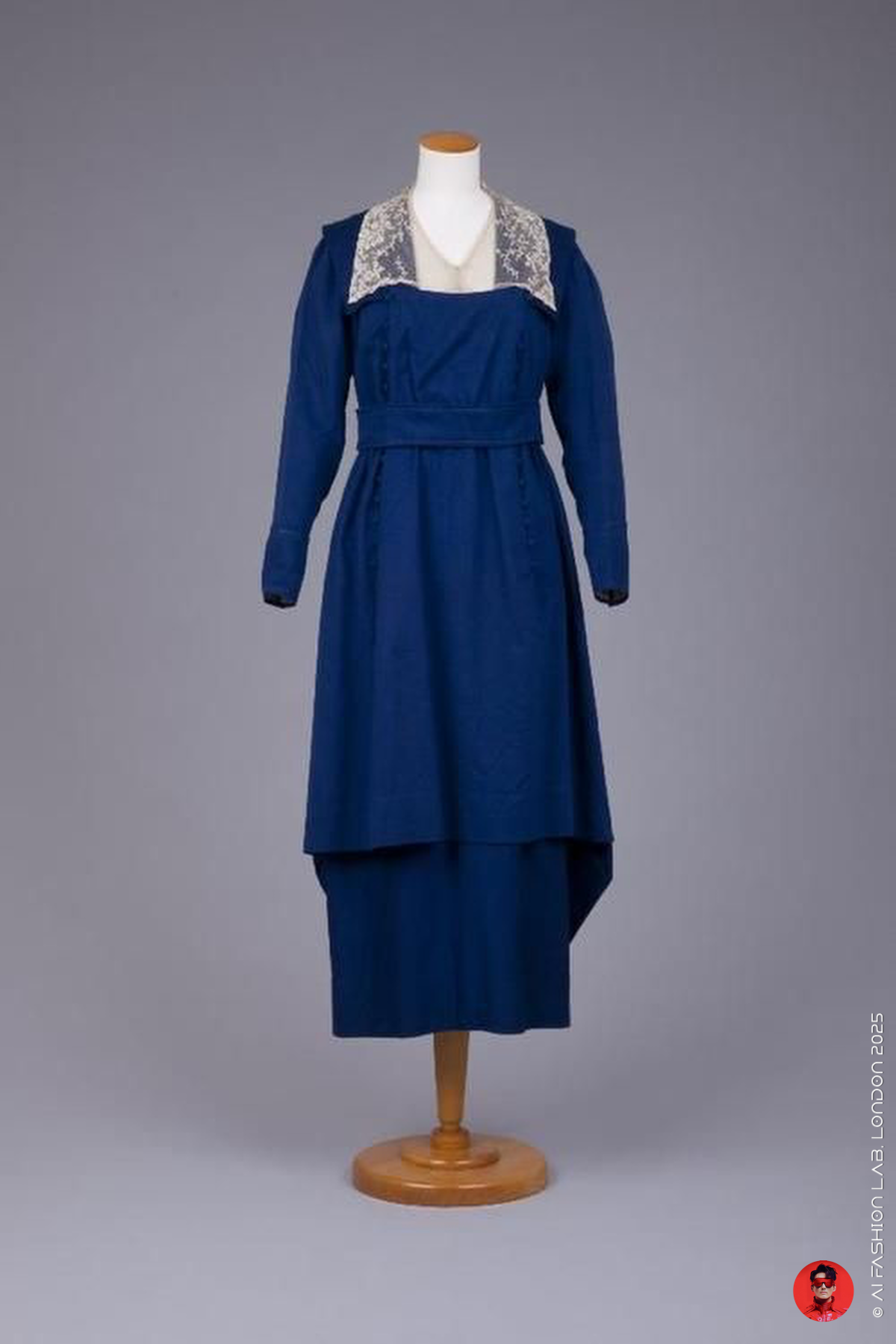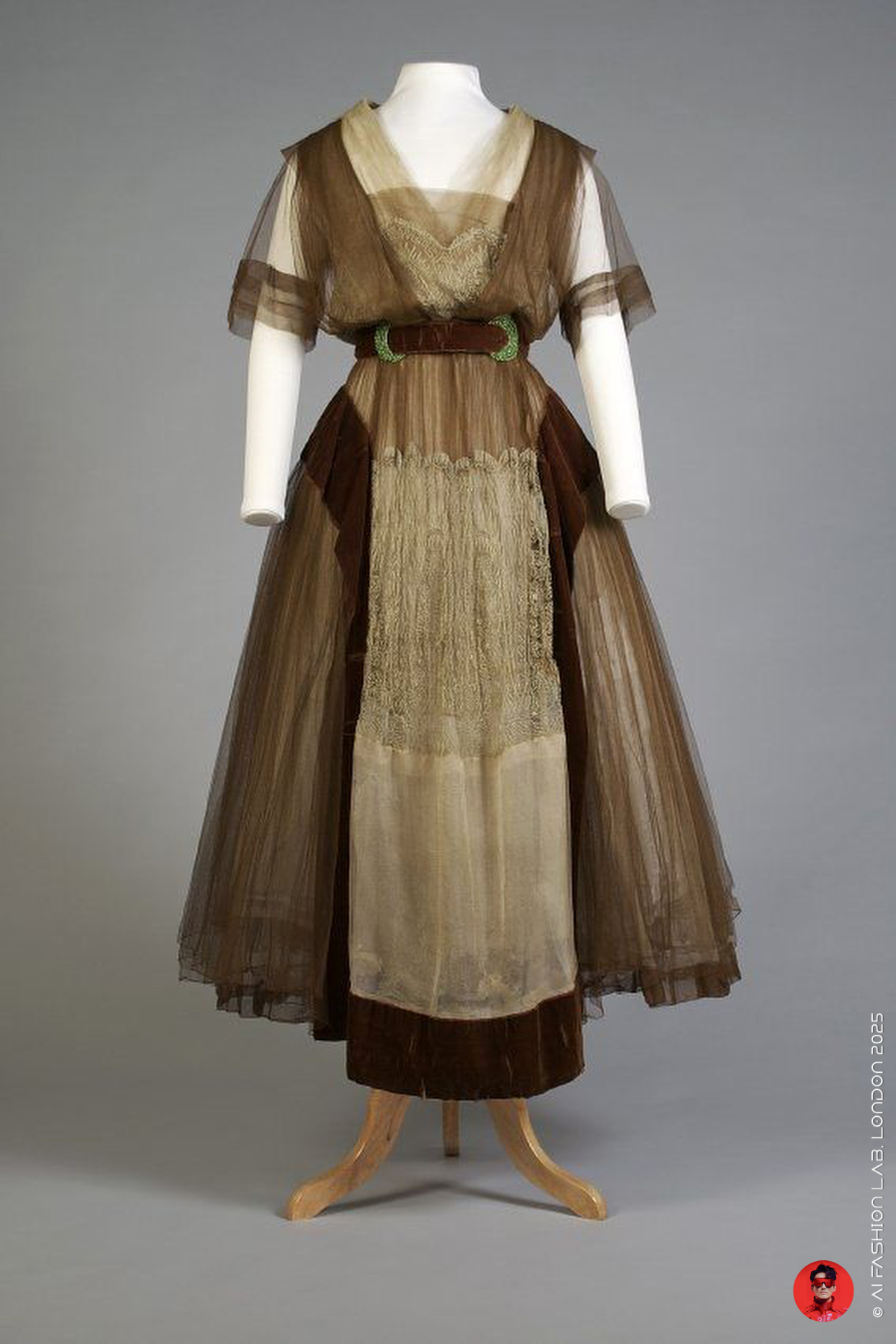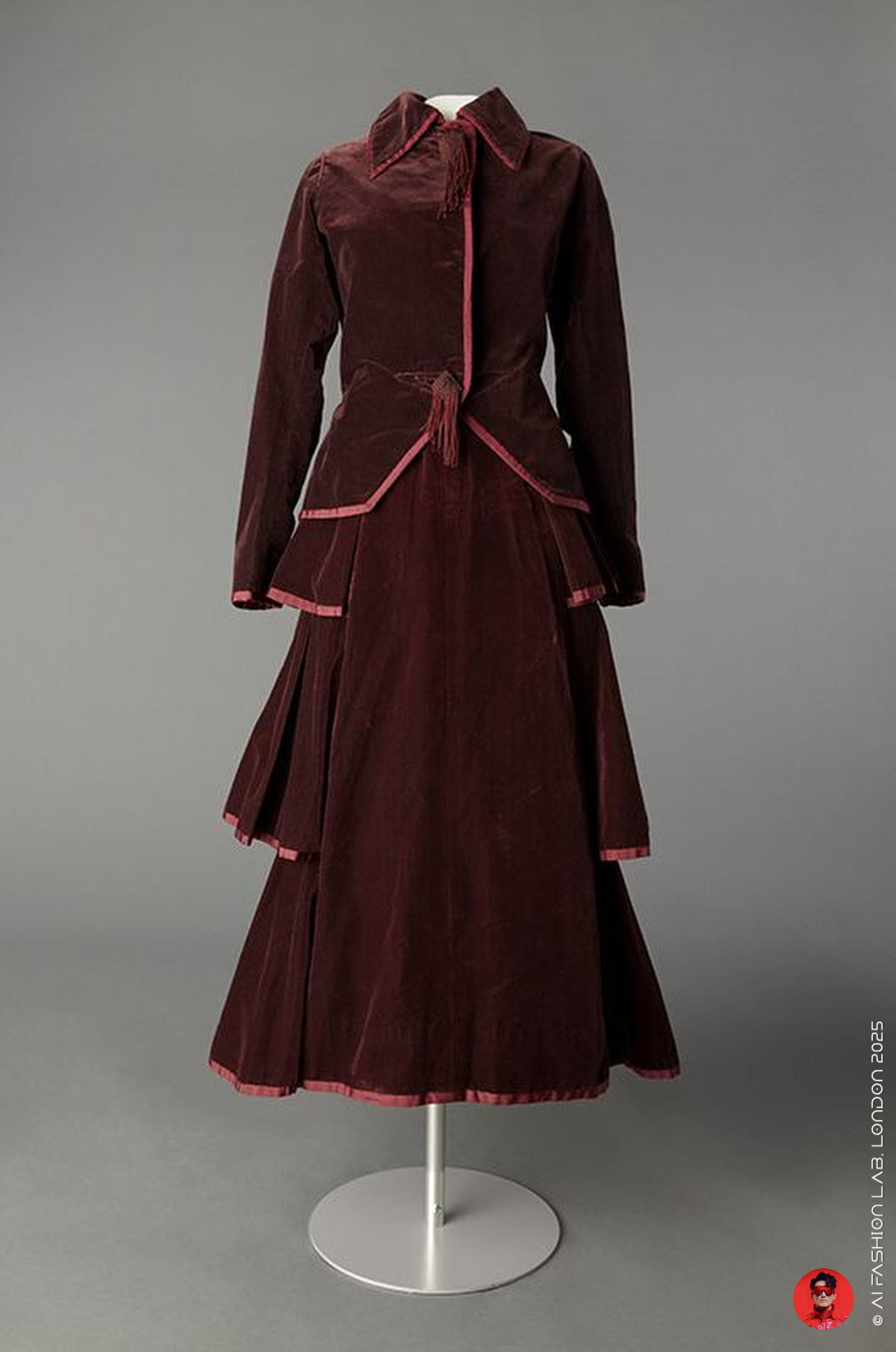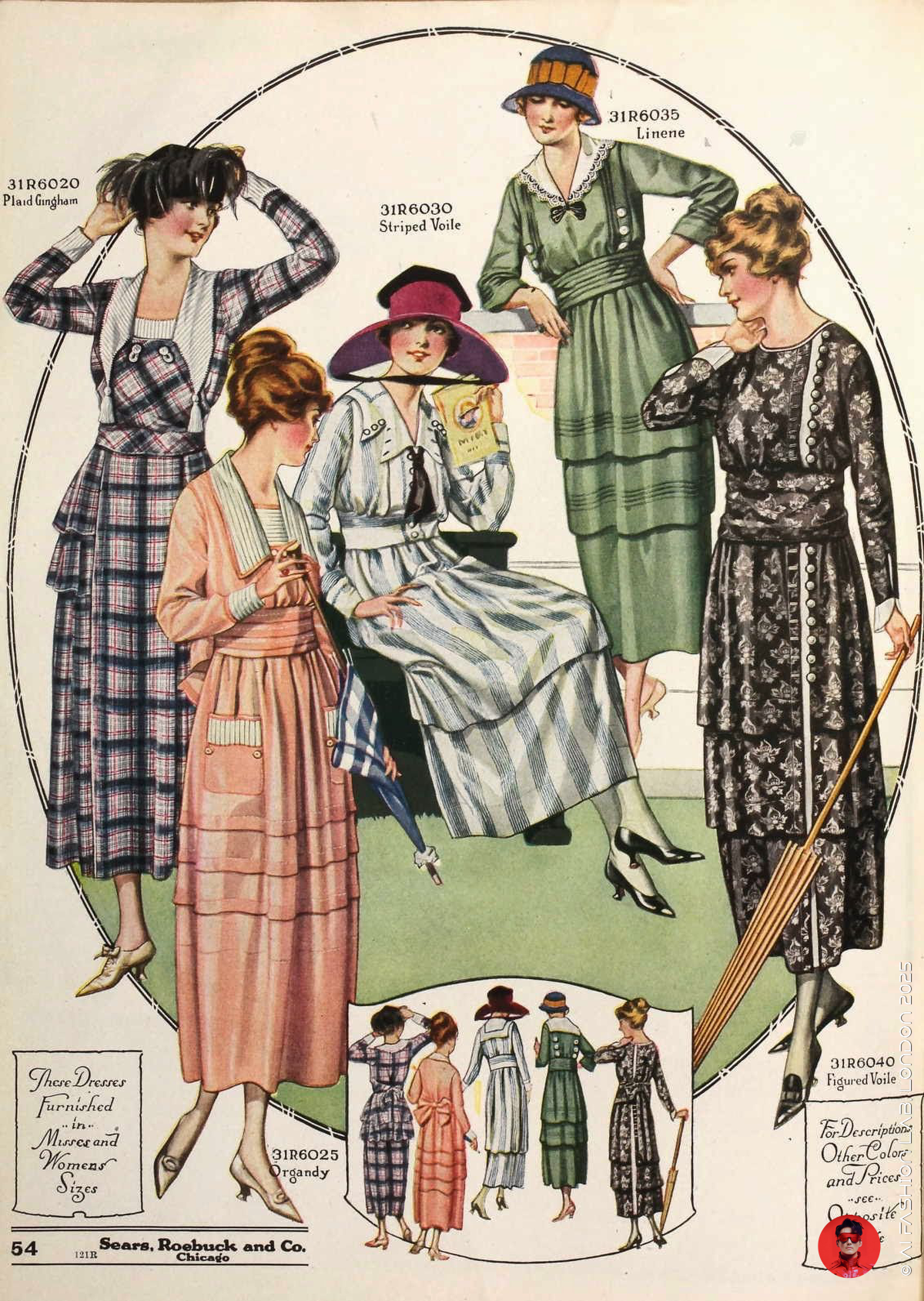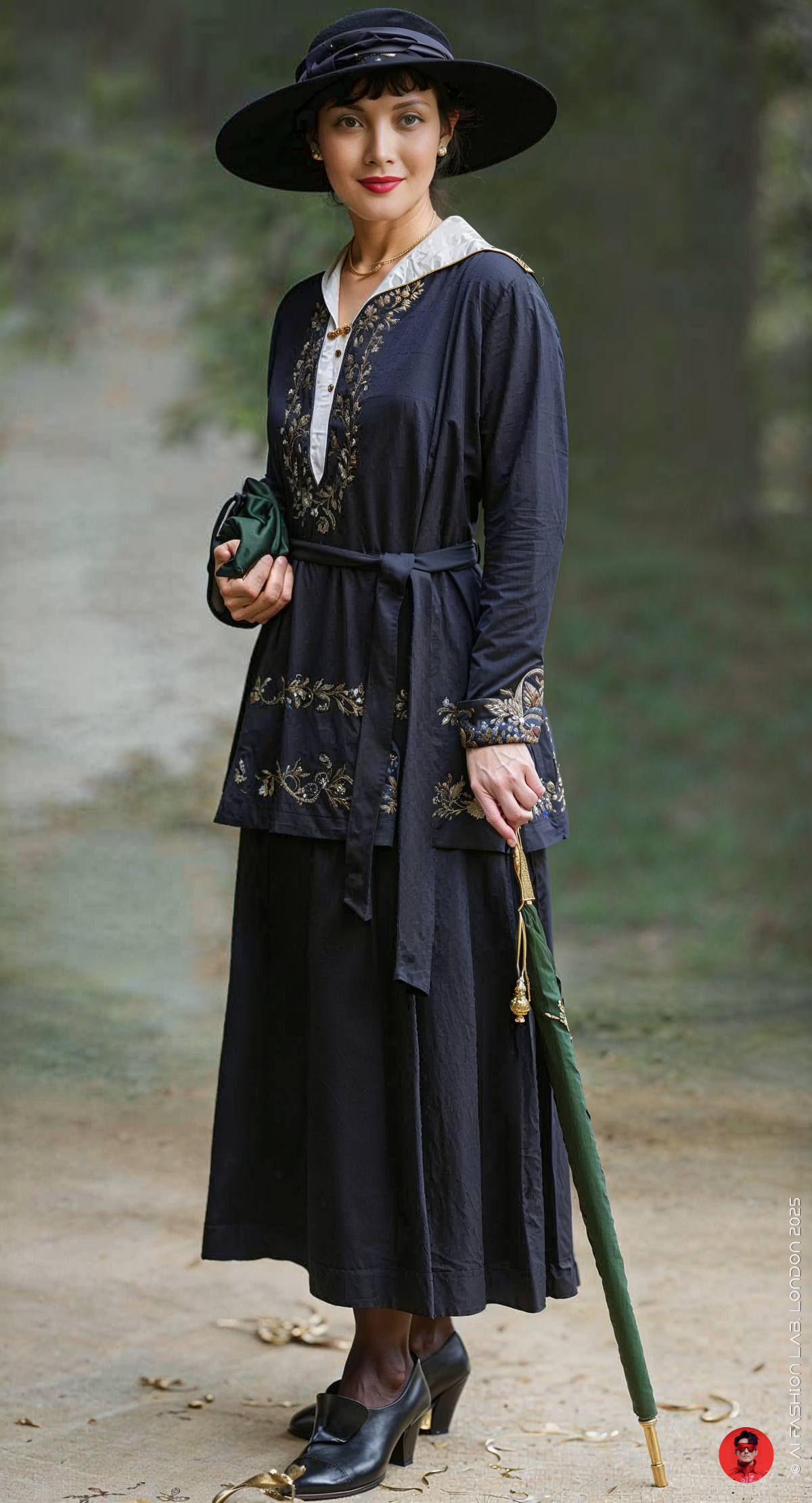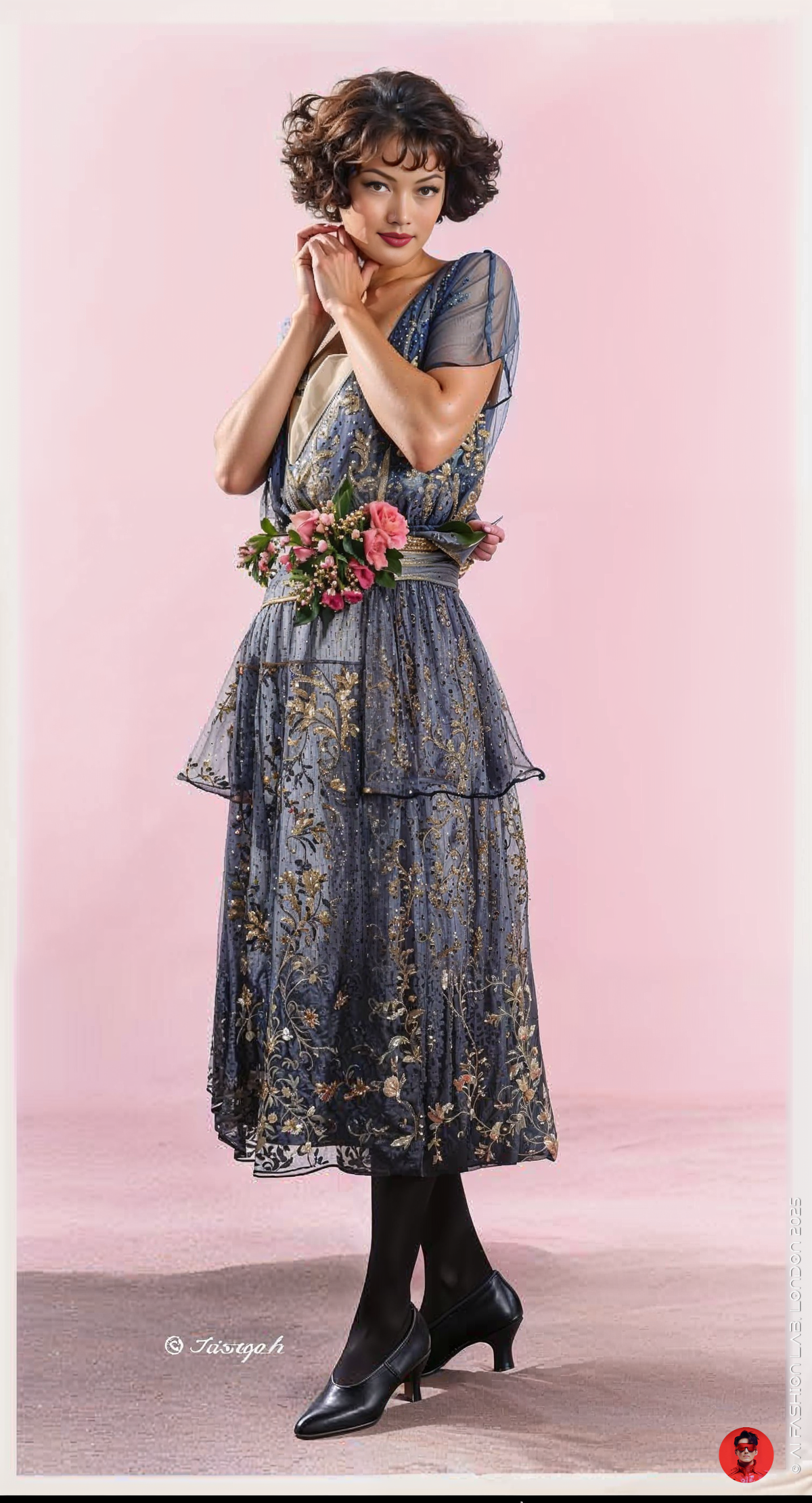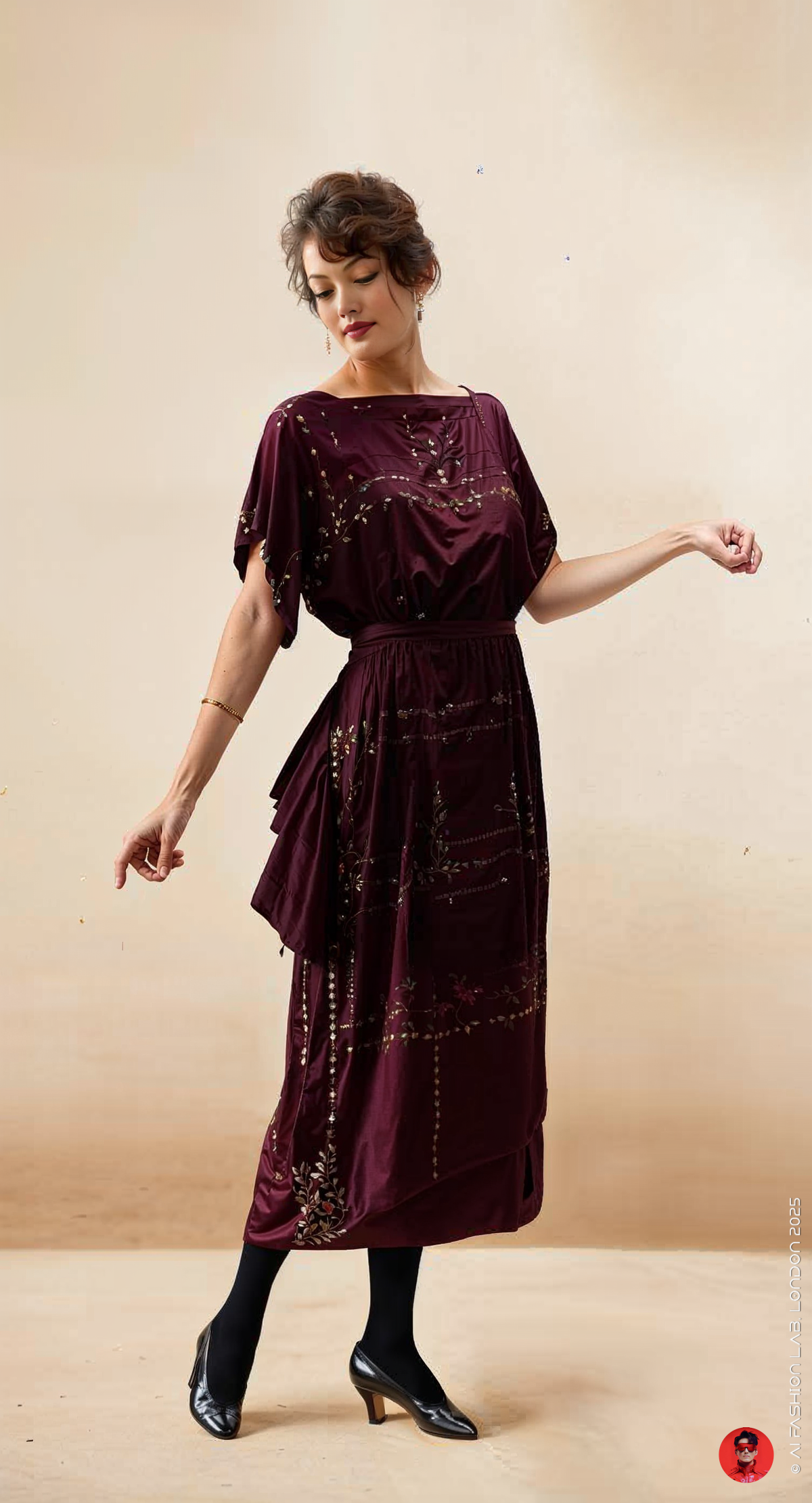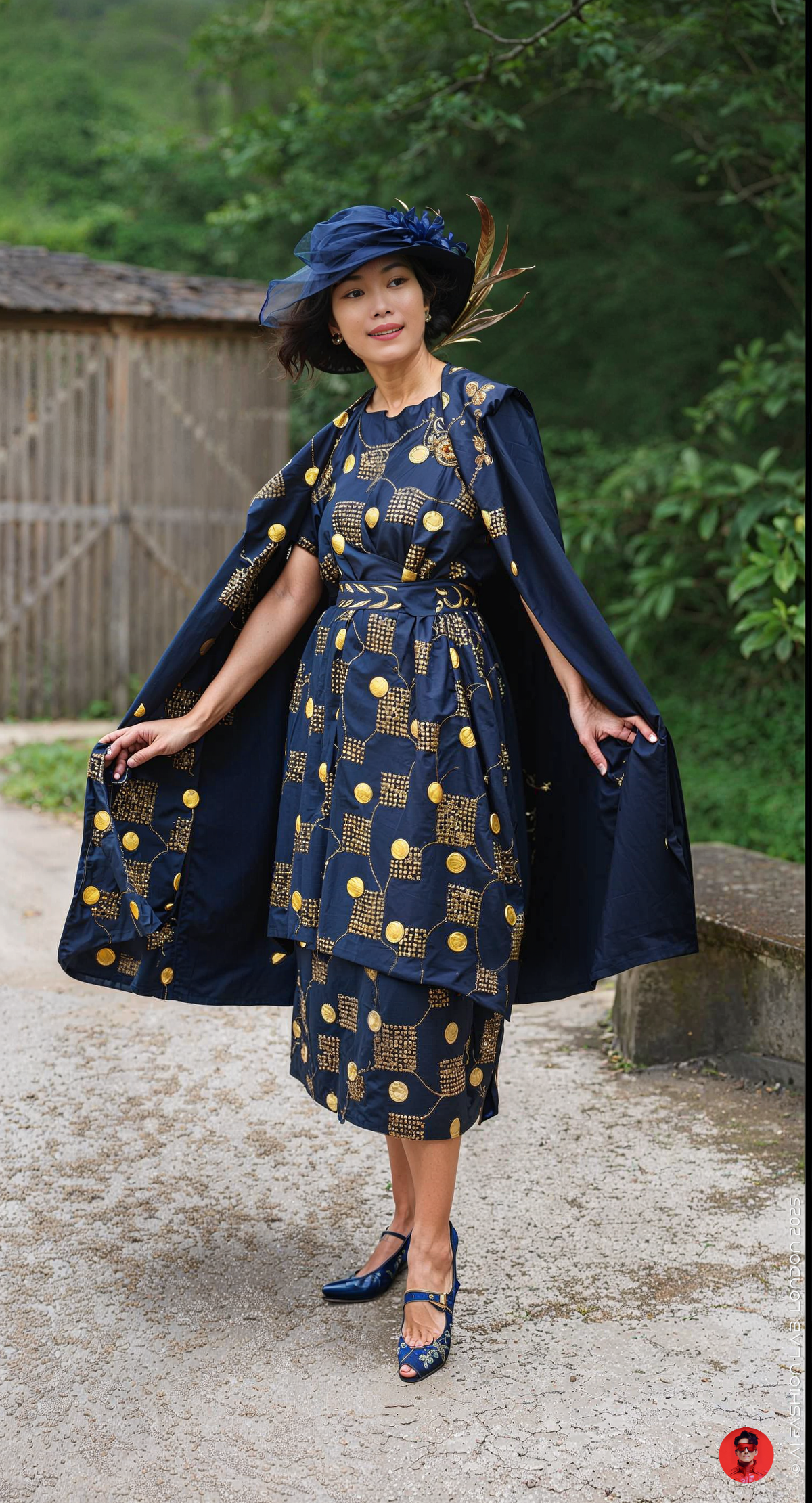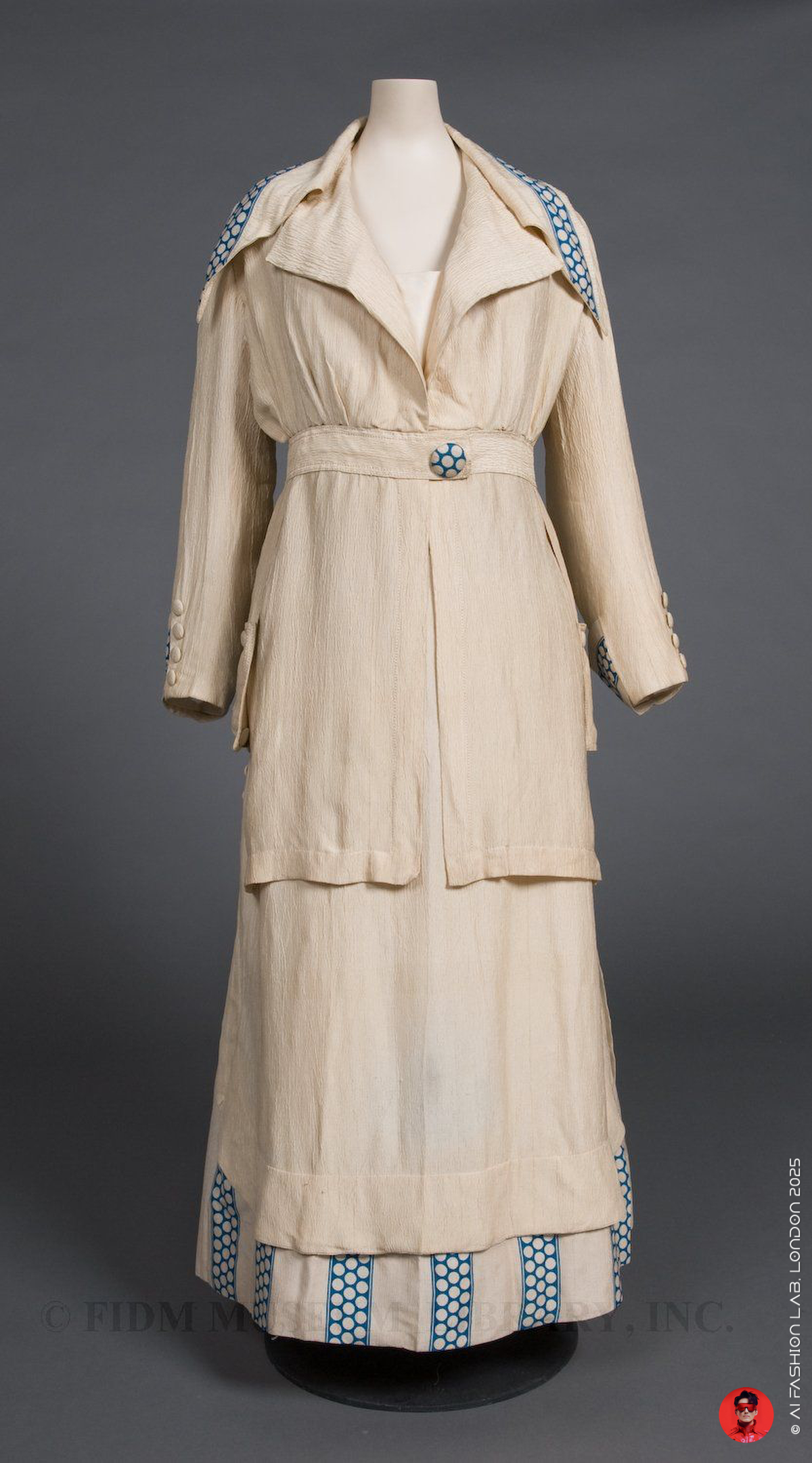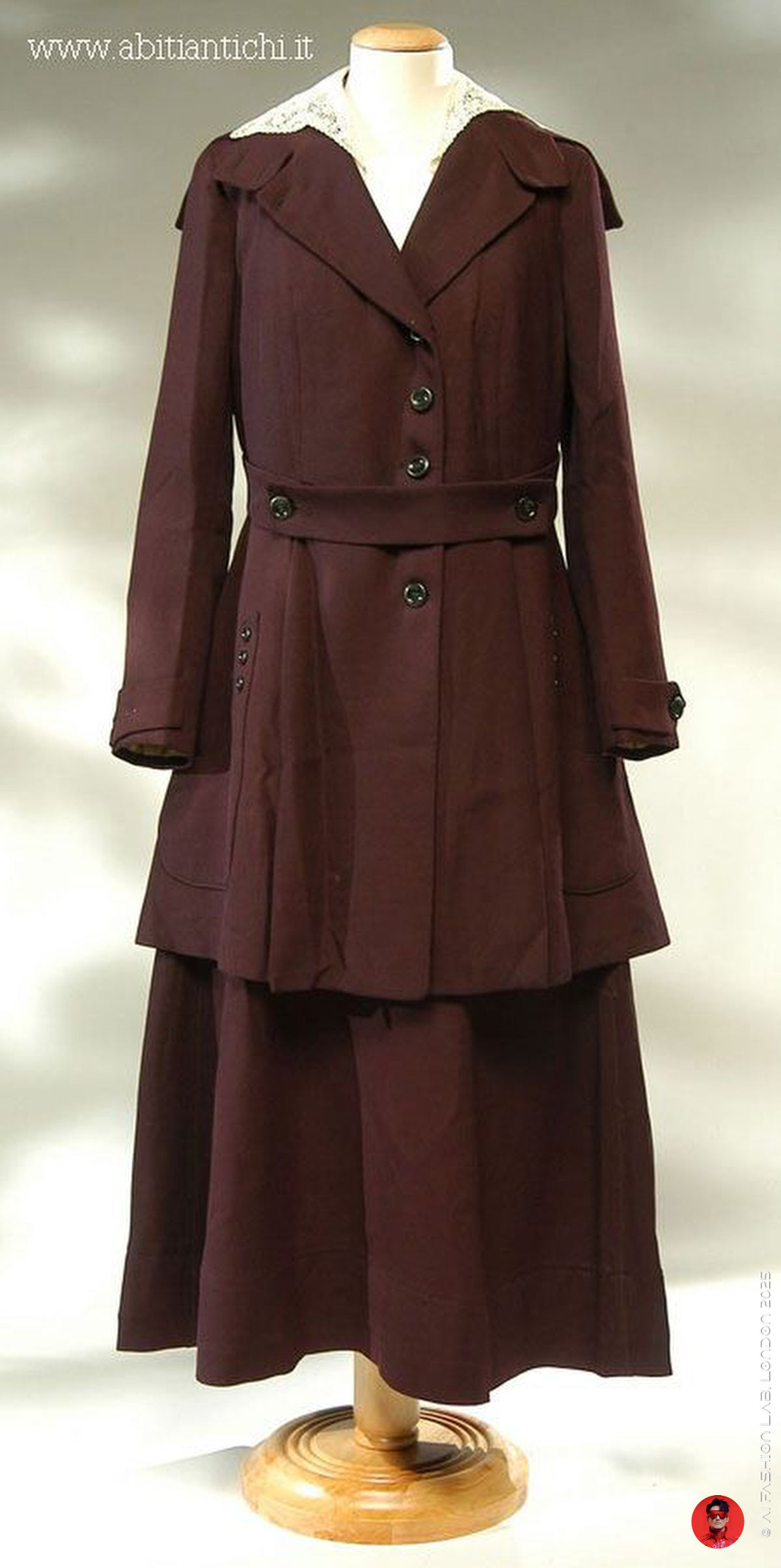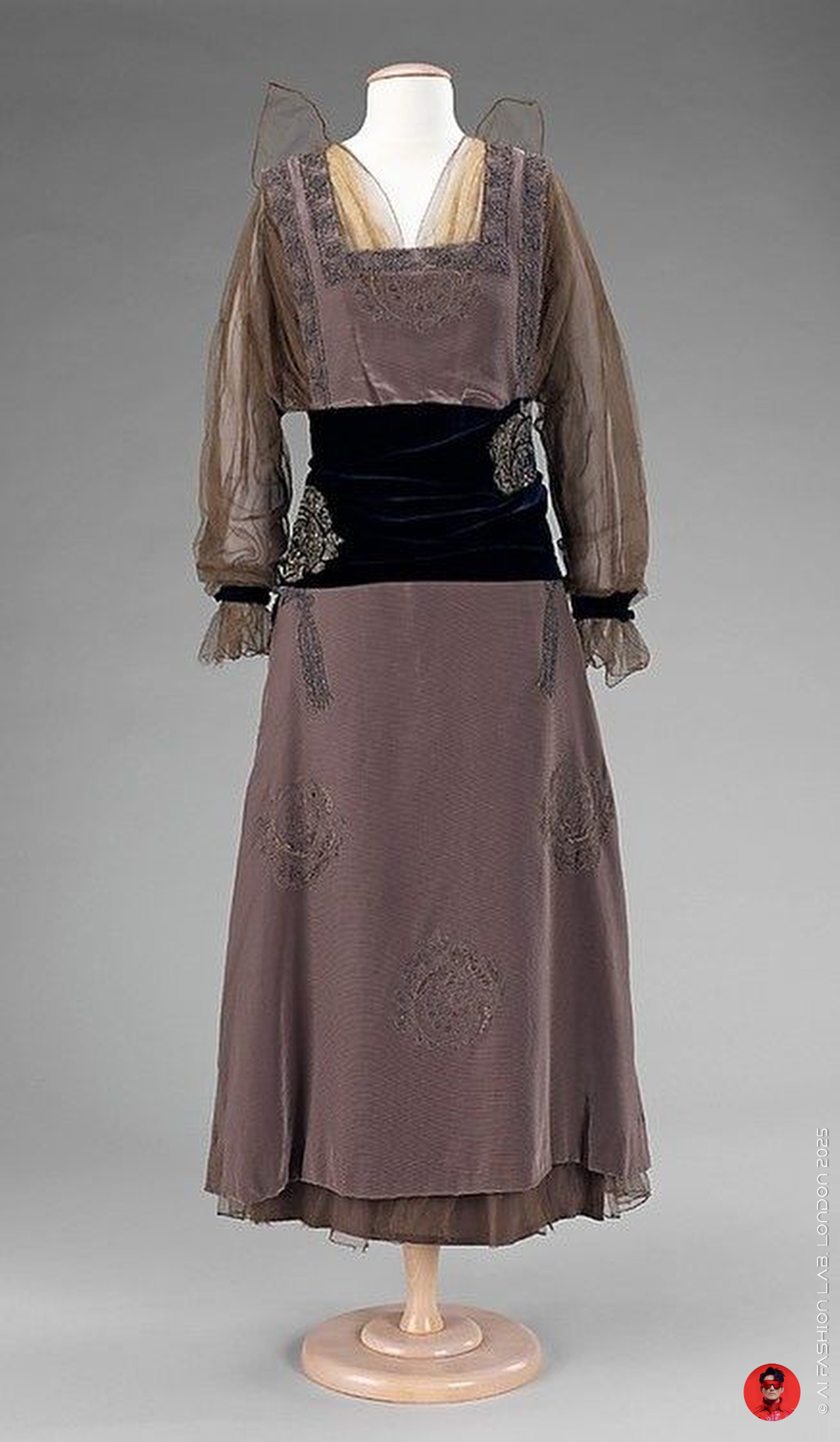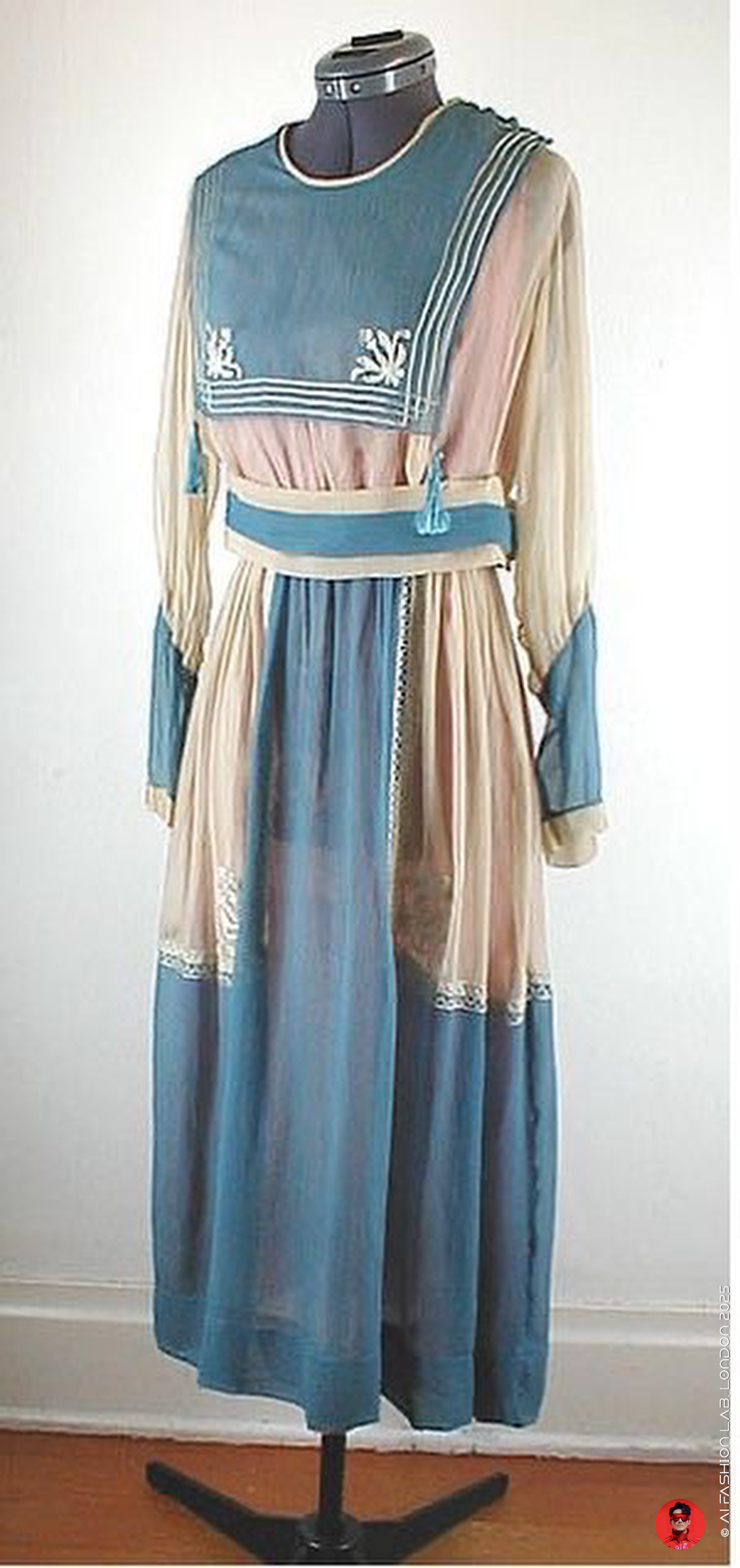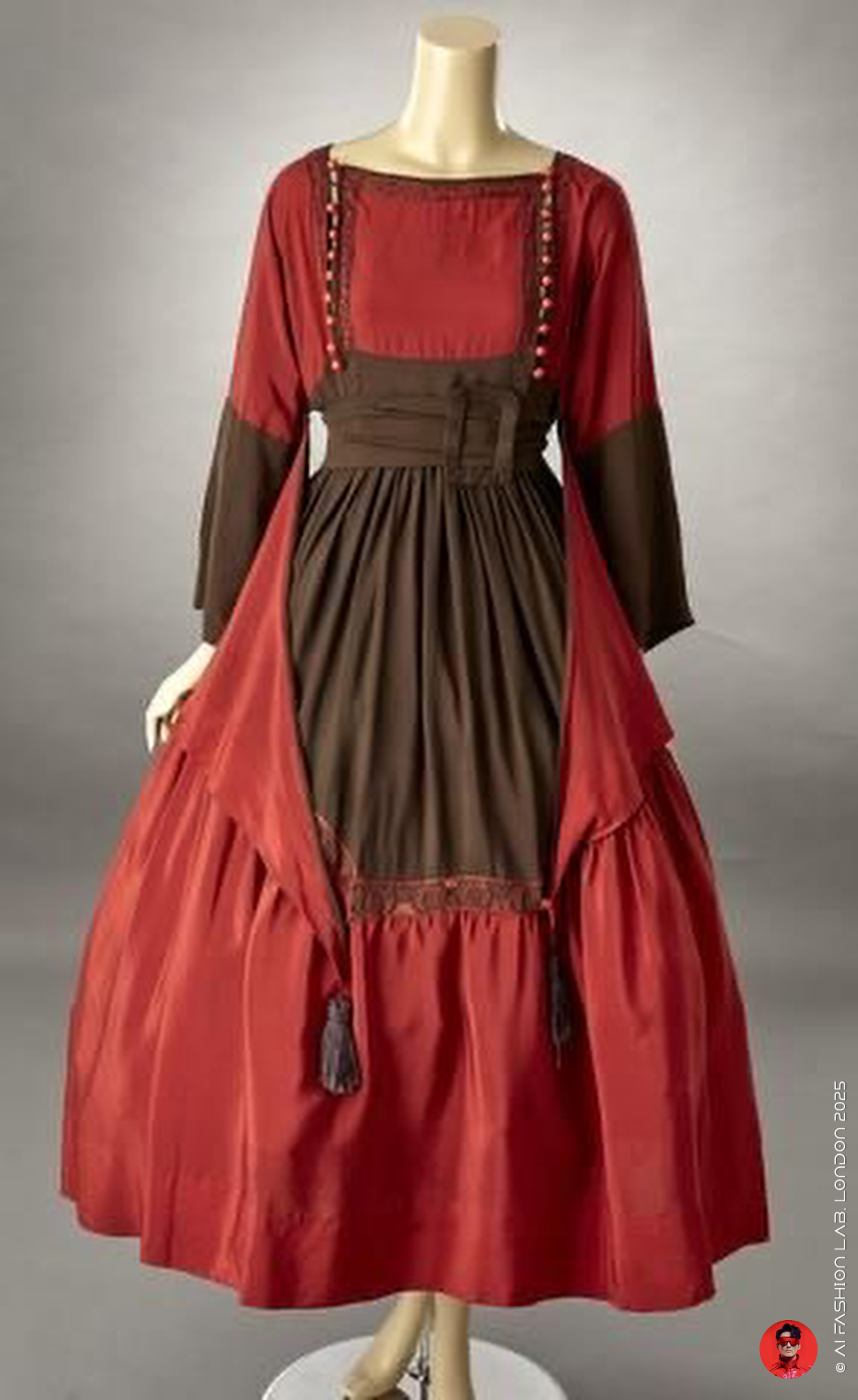แฟชั่นสตรีในช่วงสงครามโลกครั้งที่ 1 (1914-1919) และอิทธิพลต่อสยามในสมัยรัชกาลที่ 6 ตอนกลาง
แฟชั่นสตรีในช่วงสงครามโลกครั้งที่ 1 (1914-1919) และอิทธิพลต่อสยามในสมัยรัชกาลที่ 6 ตอนกลาง
ในช่วงต้นคริสต์ทศวรรษ 1910 หรือช่วงต้นของรัชกาลที่ ๖ แฟชั่นสตรีในโลกตะวันตกยังคงเปี่ยมด้วยความหรูหรา สะท้อนค่านิยมแห่งยุคเอ็ดเวิร์ดด้วยชุดกระโปรงยาวกรอมเท้า โครงเสื้อทรงเอสเคิร์ฟ (S-curve silhouette) การปักประดับอย่างวิจิตร และเสื้อผ้าชั้นในที่สวมใส่อย่างซับซ้อน เสื้อผ้าเป็นเครื่องแสดงสถานะทางสังคม ความเป็นสตรี และภาพลักษณ์แห่งความสง่างาม แต่เมื่อสงครามโลกครั้งที่ 1 ปะทุขึ้นในปี ค.ศ. 1914 โลกของแฟชั่นก็เปลี่ยนแปลงไปอย่างฉับพลัน สงครามไม่ได้เปลี่ยนแค่การเมืองและเศรษฐกิจ หากยังเปลี่ยนรูปแบบการแต่งกายของผู้หญิง การเคลื่อนไหว และภาพลักษณ์ของสตรีในสังคมอย่างถาวร
จุดเปลี่ยนยามสงคราม: จากความวิจิตรสู่ประโยชน์ใช้สอย
เมื่อผู้ชายจำนวนมากถูกเกณฑ์ไปรบ ในโลกตะวันตก สตรีจึงต้องลุกขึ้นมาทำหน้าที่แทนในภาคสังคม ไม่ว่าจะเป็นการทำงานในโรงงาน เป็นบุรุษไปรษณีย์ พนักงานเก็บตั๋ว ตำรวจหญิง หรือแรงงานในภาคอุตสาหกรรม การแต่งกายของพวกสตรีเหล่านี้จึงจำเป็นต้องปรับเปลี่ยนเพื่อความคล่องตัว ความปลอดภัย และความเหมาะสมกับงานที่ต้องทำ
กระโปรงยาวจรดพื้นถูกเลิกใช้อย่างรวดเร็ว และแทนที่ด้วยกระโปรงยาวเพียงข้อเท้าหรือครึ่งน่อง ซึ่ง ไม่เกะกะและปลอดภัยมากกว่าในสภาพแวดล้อมการทำงาน ทรงกระโปรงเปลี่ยนเป็น ทรงเอไลน์ (A-line) ที่เรียบง่าย สวมใส่สบาย ทรวดทรงของชุดหลวมขึ้น และ ลวดลายตกแต่งถูกลดทอน เสื้อรัดทรง (คอร์เซต) ที่เคยเป็นสัญลักษณ์ของความเป็นกุลสตรี กลายเป็นสิ่งที่ไม่เหมาะกับงานแรงงานแทนที่ด้วยเสื้อเชิ้ต แจ็กเก็ตเรียบง่าย และเข็มขัดที่รัดเอวพอประมาณ
เสื้อผ้าแบบเครื่องแบบกลายเป็นสัญลักษณ์ใหม่ของสตรีสมัยใหม่ เช่น เครื่องแบบของกองกำลังหญิงช่วยรบแห่งอังกฤษ (WAAC) หรือชุดของกลุ่ม Land Girls ที่ประกอบด้วยเสื้อคลุมผ้าวูล กระโปรงหนา และรองเท้าบูตแข็งแรง เครื่องแต่งกายเหล่านี้ไม่เพียงแต่ใช้ประโยชน์ได้จริงเท่านั้น แต่ยังแสดงถึงอุดมคติของผู้หญิงที่เข้มแข็ง อดทน และมีจิตวิญญาณแห่งความรักชาติ
ช่วงเปลี่ยนผ่านแห่งรูปร่าง: รากฐานของแฟชั่นยุคฟลัปเปอร์ (Flapper)
กระแสการแต่งกายที่เน้นประโยชน์ใช้สอยในช่วงสงคราม ได้ปูทางให้กับการปฏิวัติแฟชั่นครั้งใหญ่ในยุค 1920 ภายหลังสงคราม ภาพอุดมคติของร่างกายหญิงสาวได้เปลี่ยนไปจากสรีระโค้งเว้าแบบเอ็ดเวิร์ดเดียน กลายเป็นรูปแบบที่ ผอมเพรียวและดูอ่อนเยาว์ ชายกระโปรงยังคงสั้นกว่าก่อนสงคราม และชุดกระโปรงยุคใหม่มักมี ช่วงเอวที่ลดต่ำลง, เนื้อผ้าเบา, และ ดีไซน์หลวม ที่อำนวยความสะดวกในการเคลื่อนไหว
จากบริบทนี้เกิดรูปแบบใหม่ของผู้หญิงที่เรียกว่า “ฟลัปเปอร์” – หญิงสาวผู้กล้าทำลายขนบเดิม สูบบุหรี่ เต้นรำ และแสดงออกถึงอิสรภาพส่วนตัว ชุดของเธอคือทายาทโดยตรงของเสื้อผ้ายุคสงคราม: สวมกระโปรงสั้นที่คล่องตัว ไม่ใส่คอร์เซต และหยิบยืมรายละเอียดแบบผู้ชาย เช่น หมวกโคลช์ (cloche) และรองเท้าออกซ์ฟอร์ด สงครามได้ลบเส้นแบ่งทางเพศ และแฟชั่นในยุคหลังสะท้อนถึงความคลุมเครือทางบทบาทนี้อย่างชัดเจน
กลิ่นอายแบบชายและแฟชั่นที่เป็นกลางทางเพศ
หลังสงคราม ผู้หญิงจำนวนมากยังคงชื่นชอบความสะดวกสบายและความคล่องตัวที่ได้จากเสื้อผ้ารูปแบบใหม่ เสื้อแจ็กเก็ตตัดเย็บแบบผู้ชาย เสื้อคลุมกันฝน (trench coat) และเสื้อเชิ้ตแบบมีปก เริ่มกลายเป็นส่วนหนึ่งของเสื้อผ้าประจำวัน การที่ผู้หญิงเริ่มทำงานในสำนักงาน และมีสิทธิเสียงทางการเมืองมากขึ้น (เช่น สิทธิเลือกตั้งในบางประเทศ) ก็ยิ่งผลักดันให้ แฟชั่นกลายเป็นเรื่องของการแสดงตัวตน มากกว่าความงามเพียงผิวเผิน
สไตล์แบบเป็นกลางทางเพศ (androgynous aesthetic) จึงกลายเป็นหนึ่งในลายเซ็นสำคัญของแฟชั่นยุค 1920 ไม่ใช่เพียงเพราะความสวยงาม แต่เพราะมันคือ เครื่องมือในการแสดงอัตลักษณ์และเรียกร้องสิทธิของผู้หญิงยุคใหม่
อิทธิพลต่อสยาม: การปฏิรูปยุค ร.6 และกระโปรงที่สั้นขึ้น
สยามในรัชสมัย พระบาทสมเด็จพระมงกุฎเกล้าเจ้าอยู่หัว (รัชกาลที่ 6, พ.ศ. 2453–2468) ก็กำลังอยู่ในช่วงของการปฏิรูปครั้งสำคัญ ภายใต้นโยบายสร้างรัฐสมัยใหม่ การแต่งกายกลายเป็นสิ่งสำคัญที่สะท้อนความเจริญและภาพลักษณ์ของประเทศในสายตานานาชาติ
ก่อนหน้านี้ สตรีไทยนิยมสวม โจงกระเบน หรือ ผ้าซิ่น กับ เสื้อเบลาส์แบบเอ็ดวอร์เดีย และ แพรสพาย แต่เมื่อความคิดแบบตะวันตกเข้าสู่ราชสำนักและระบบการศึกษา โดยเฉพาะในกลุ่มชนชั้นสูง ผู้หญิงไทยเริ่มนำเสื้อผ้าแบบตะวันตกมาประยุกต์เข้ากับผ้าทอไทย เช่น การสวมเสื้อเบลาส์ ตัดเย็บแบบฝรั่งกับผ้าซิ่น หรือคลุมทับด้วยแจ็กเก็ตตะวันตก แฟชั่นสตรีในช่วงสงครามโลก ซึ่งเน้นความคล่องตัวและการทำงาน สะท้อนออกมาในรูปแบบของ เครื่องแบบนักเรียนหญิง เครื่องแบบข้าราชการหญิง และเสื้อผ้าแนวเครื่องแบบ ซึ่งได้รับอิทธิพลจากเสื้อผ้าทหารหญิงในยุโรป
ในขณะเดียวกัน ภาพถ่ายจากช่วงปลายรัชกาลที่ 6 แสดงให้เห็นถึงการเปลี่ยนแปลงอย่างชัดเจน สตรีไทยโดยเฉพาะในกรุงเทพฯ เริ่ม สวมผ้าซิ่นสั้นขึ้นจนเห็นข้อเท้า หรือบางครั้งถึงระดับน่อง ถือเป็นการเปลี่ยนแปลงที่สำคัญจากประเพณีเดิม การสั้นขึ้นของชายกระโปรงหรือผ้าซิ่น ซึ่งสอดคล้องกับแนวโน้มในยุโรปหลังสงคราม สะท้อนทั้ง ความทันสมัยของสังคมเมือง และ การปรับตัวเข้ากับโลกาภิวัตน์ โดยยังคงรากเหง้าความเป็นไทยไว้ในลวดลายผ้าและโครงชุดที่ไม่ละทิ้งความงามแบบดั้งเดิม
บทสรุป: การปฏิวัติแฟชั่นระดับโลก
สงครามโลกครั้งที่ 1 เปลี่ยนบทบาทของผู้หญิงไปอย่างสิ้นเชิง และแฟชั่นก็ปรับตามอย่างฉับพลัน จากชุดรัดรูปหรูหราแห่งยุคเอ็ดเวิร์เดียน สู่ชุดยูนิฟอร์มเรียบง่ายของผู้หญิงทำงาน ก่อนกลายเป็นชุดกระโปรงสั้นอิสระแห่งยุคฟลัปเปอร์
สำหรับสยาม การเปลี่ยนแปลงนี้สะท้อนให้เห็นในราชสำนักและสังคมชั้นสูงในรัชกาลที่ 6 ที่เริ่มรับเอารูปแบบการแต่งกายแบบตะวันตกมาใช้ในชีวิตประจำวัน สะท้อนถึงการก้าวเข้าสู่ความเป็นสมัยใหม่ที่ยังคงเอกลักษณ์ของตนไว้ นับเป็นช่วงเปลี่ยนผ่านที่สำคัญของ แฟชั่นสตรีไทย ที่เริ่มผสานความงามแบบไทยเข้ากับความสะดวกสบายและความคล่องตัวแบบตะวันตกอย่างกลมกลืน
From Gowns to Utility: Women’s Fashion During World War I and Its Influence on Thailand under Rama VI
During the early 1910s, women’s fashion across the Western world was defined by floor-length gowns, S-curve silhouettes, intricate embroidery, and layered understructures. The Edwardian era saw an emphasis on elegance and formality, with clothing that reflected class, status, and femininity. However, with the outbreak of World War I in 1914, the fashion landscape began to change rapidly and dramatically. The war did not only affect politics and economies — it revolutionised how women dressed, moved, and were perceived in society.
The Wartime Shift: From Decoration to Function
As millions of men left for the frontlines, women were called to fill their roles in public life. They became factory workers, postwomen, tram conductors, police auxiliaries, and even munitions workers. In order to accommodate these roles, clothing had to be modified for practicality, safety, and freedom of movement.
Floor-length gowns were quickly abandoned in favour of ankle-length or calf-length skirts, which were less cumbersome and safer for industrial work. The silhouette became more A-line, the waistlines loosened, and decorative embellishments diminished. The corset — once a staple of refined dress — was no longer suitable for wartime duties. In its place, women adopted simpler blouses, tailored jackets, and belts that cinched the waist only modestly.
Utility and uniformity became the defining features of wartime clothing. Garments like the British Women's Army Auxiliary Corps uniform or the Land Girl attire consisted of woollen tunics, thick skirts, and sturdy boots. These were not only functional but also symbolic of a new type of woman: independent, capable, and patriotic.
Silhouettes in Transition: The Foundations of the 1920s Look
This movement towards practical clothing during the war laid the groundwork for the revolutionary fashion of the 1920s. By the end of the war, the ideal female form had shifted from the voluptuous Edwardian figure to a lean, youthful silhouette. Hemlines remained shorter than pre-war norms, and garments featured dropped waists, looser fits, and lightweight materials that allowed for movement and expression.
This period gave rise to the flapper — a woman who smoked, danced, and embraced social freedoms. Her dress was a direct descendant of wartime clothing: she wore comfortable, shorter skirts, abandoned corsetry, and often adopted masculine elements, such as cloche hats and oxford shoes. The war had blurred gender roles, and post-war fashion reflected this ambiguity.
Masculine Touches and the Androgynous Aesthetic
After the war, many women retained a taste for the masculine practicality they had adopted during the conflict. Tailored jackets, trench coats, and shirts with collars became part of fashionable daywear. The rise of women in office jobs and increased political agency (such as the suffragette victory in many countries) also contributed to this shift. Women were no longer confined to the domestic sphere — and neither were their wardrobes.
This androgynous aesthetic would become one of the defining visual languages of 1920s fashion. Notably, this was not just about style but about identity — women were claiming their place in modern society, and fashion was one of their tools of resistance and transformation.
Impact on Thailand: The Rama VI Reign and the Rise of Hemlines
Thailand, then known as Siam, was undergoing its own transformation during the reign of King Vajiravudh (Rama VI, r. 1910–1925). As the country sought to modernise and align with Western nations, fashion was a key aspect of visual diplomacy and national identity.
Prior to this period, Thai women typically wore the pha-sin — a tubular wrap skirt — paired with a sabai or simple blouse. However, as Western ideas entered court life and education systems (particularly among the elite), women began to adapt Western-style blouses, jackets, and skirts, often pairing them with traditional textiles. The influence of wartime practicality abroad coincided with reformist nationalism at home.
Under Rama VI, uniforms became more widespread, especially in schools and public service. These often borrowed from Western military styles, with jackets and belts echoing those worn by women in Europe during and after the war. At the same time, photographs and illustrations from this period show Thai women wearing pha-sin with raised hems, often revealing the ankles or calves, a significant departure from earlier norms.
This shortening of the hem — especially among the Bangkok elite — reflected both aesthetic modernisation and pragmatic adaptation to urban life and Western modes of transportation. It echoed the global rise in hemlines influenced by post-war shifts in Europe and North America.
Conclusion: A Global Fashion Revolution
The First World War created a seismic shift in women’s roles — and their clothing responded accordingly. The restrictive elegance of the Edwardian gown gave way to the functionality of the war uniform, which then gave birth to the liberating styles of the Roaring Twenties.
In Thailand, these shifts resonated deeply during the reign of Rama VI. While still grounded in traditional forms, Thai fashion began to incorporate practicality, shorter hems, and Western-inspired jackets in ways that mirrored the changing roles of women around the globe. This period marked the first clear steps toward modern Thai fashion, where local and global identities converged — and where women claimed a new space in both society and style.
#aifashionlab #AI #aiartist #aiart #aifashion #aifashiondesign #aifashionstyling #aifashiondesigner #fashion #fashionhistory #historyoffashion #fashionstyling #fashionphotography #digitalfashion #digitalfashiondesign #digitalcostumedesign #digitaldesign #digitalaiart #ThaiFashionHistory #ThaiFashionAI









